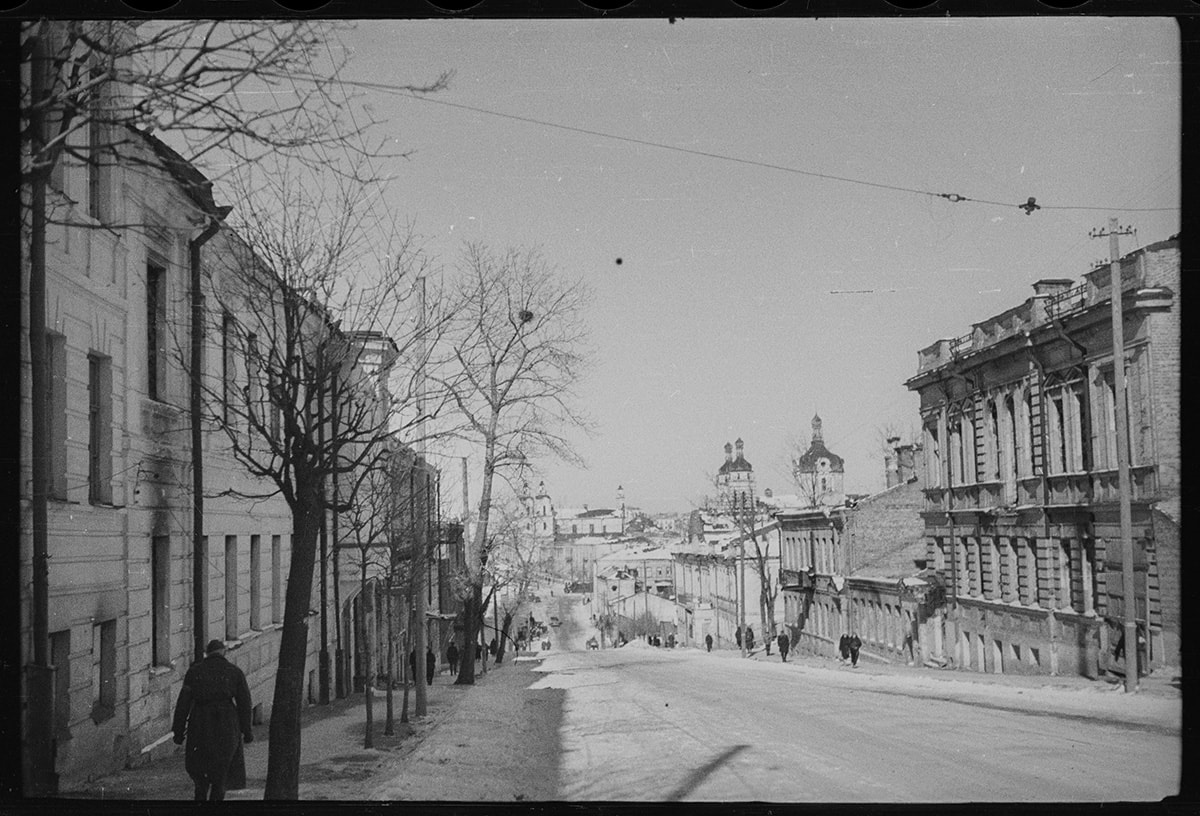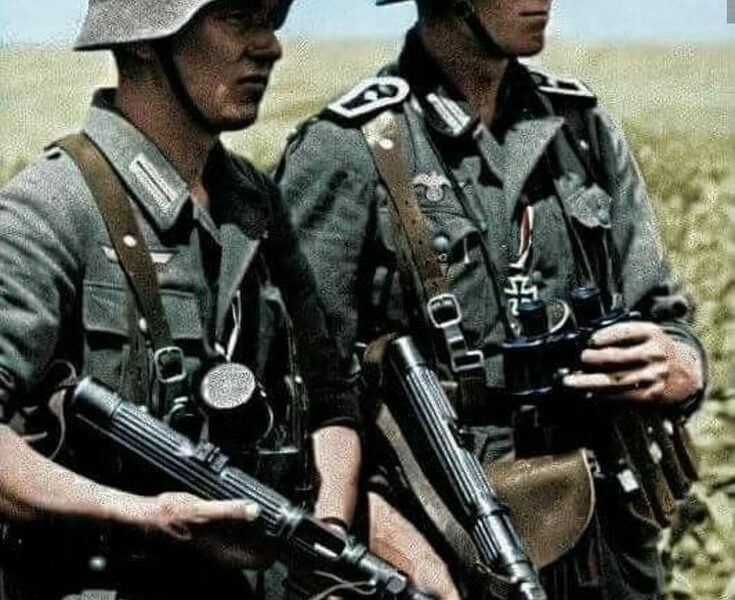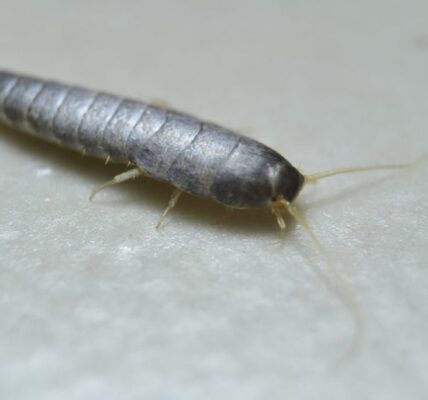The winter of 1941/42 was very severe, unusual for the Germans. This is clearly visible in the photographs by the frozen treetops. To build and insulate their homes, the Germans dismantled the houses of neighboring villages. And to feed their horses, they took the straw from the roofs. This time was Catholic Christmas, the first Christmas celebrated by the Germans on the Eastern Front. At the German headquarters, which was located in one of the village houses, the Germans set up a Christmas tree with candles. On the wall is a poster with a picture of Hitler and the inscription “Hitler, the Liberator!” The photographer takes several self-portraits as well as group portraits of German soldiers together with cheerful local girls, some of whom are wearing German coats.
The photographer’s unit is also tasked with guarding a section of the railway line used to transport German tanks for the further advance eastward. One of the images shows passing platforms loaded with German Panzerkampfwagen IV medium tanks in winter camouflage.
At some point, perhaps during a vacation or excursion, the photographer finds himself in the city of Vitebsk, occupied since July 1941. The photographer captures the half-destroyed winter city and the life within. The images include Zamkovaya Street, St. Nicholas Cathedral, St. Anthony’s Church, the Church of the Nativity, the obelisk to the heroes of the Great Patriotic War of 1812, and numerous ruins of bombed and burned buildings. Along the Dvinskiy Bridge, which the Germans rebuilt fairly quickly, one can see the active movement of German equipment. The city itself is filled with German soldiers and the ruins of destroyed buildings, among which local women and children wander.
View as story View as gallery
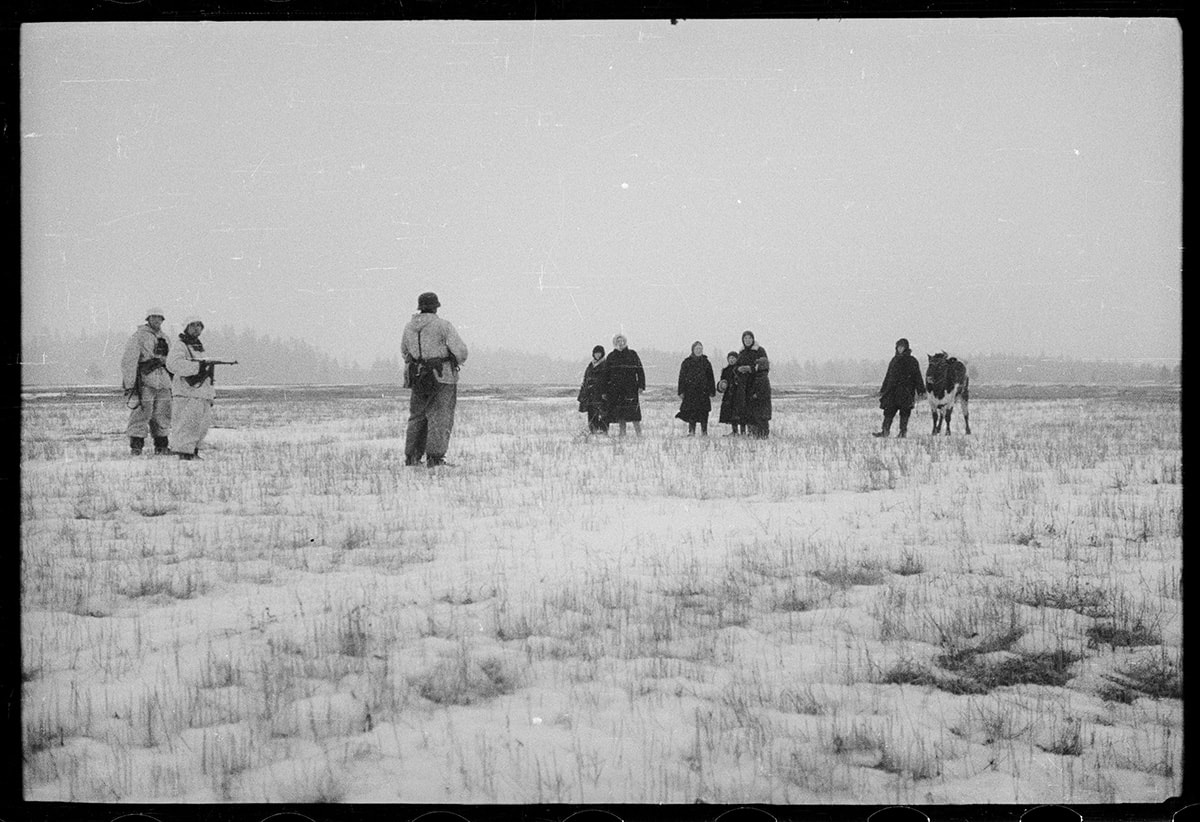
Germans interrogate locals arrested on suspicion of collaborating with partisans. Vitebsk Region, Belarus, USSR. Winter 1941-42
Germans interrogate locals arrested on suspicion of collaborating with partisans. Vitebsk Region, Belarus, USSR. Winter 1941-42
More about the photo
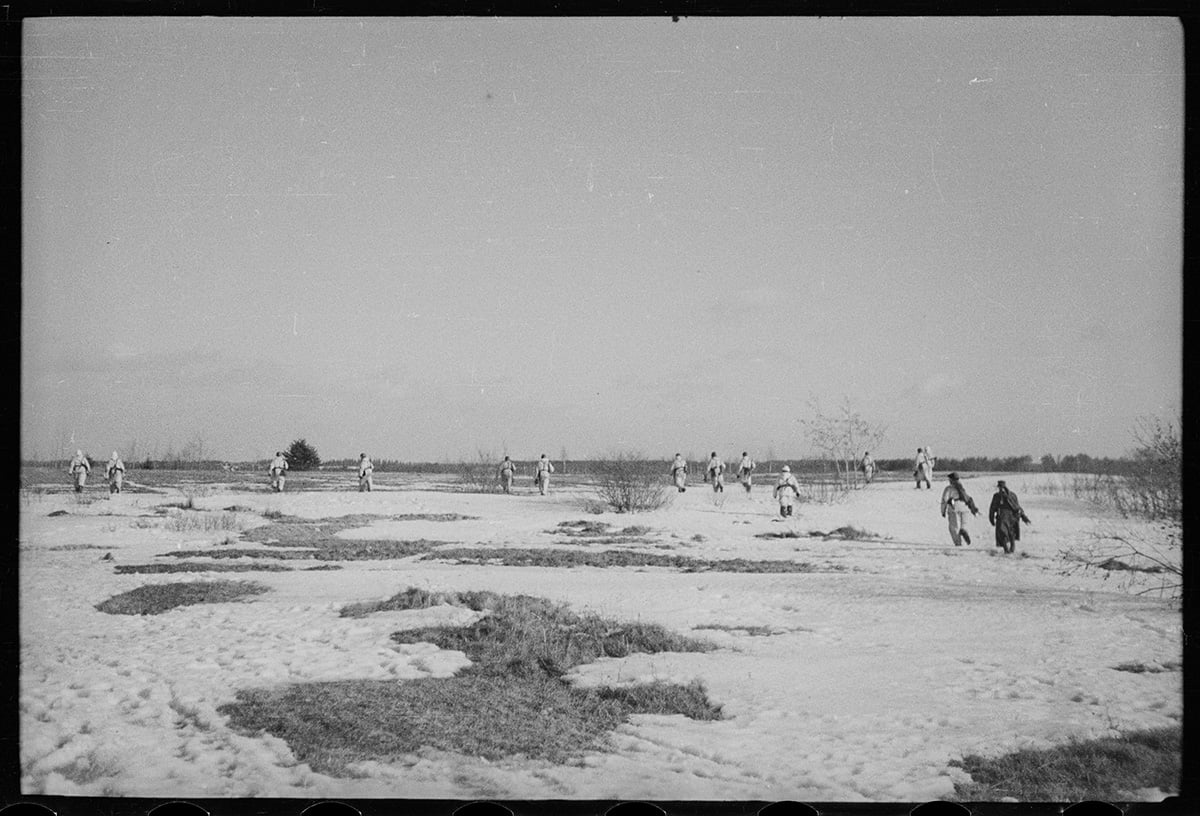
German soldiers in winter uniforms comb fields during an attack on partisans. Vitebsk Region, Belarus, USSR. Winter 1941-42
German soldiers in winter uniforms comb fields during an attack on partisans. Vitebsk Region, Belarus, USSR. Winter 1941-42
More about the photo
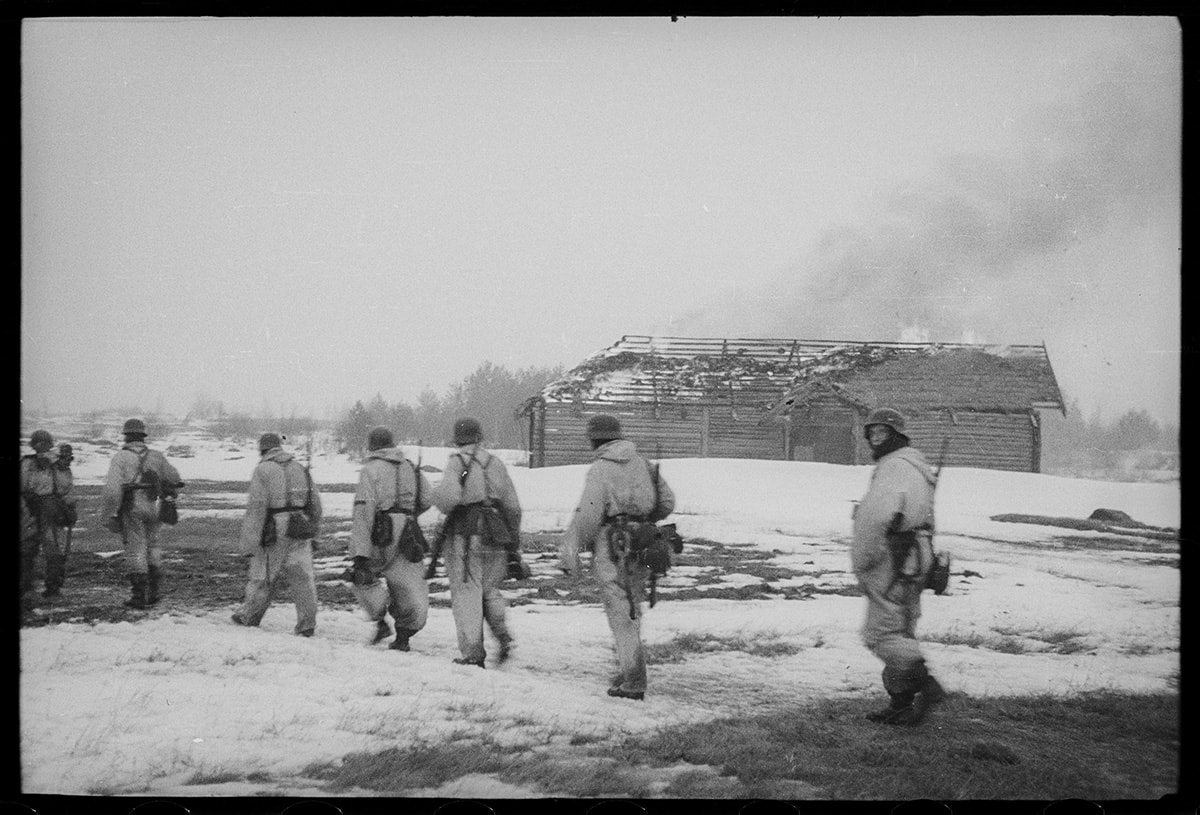
German paratroopers in winter uniforms carry out an ambush on partisans. In the background, a village house set on fire by the Germans burns. Vitebsk Region, Belarus, USSR. Winter 1941-42
German paratroopers in winter uniforms carry out an ambush on partisans. In the background, a village house set on fire by the Germans burns. Vitebsk Region, Belarus, USSR. Winter 1941-42
More about the photo
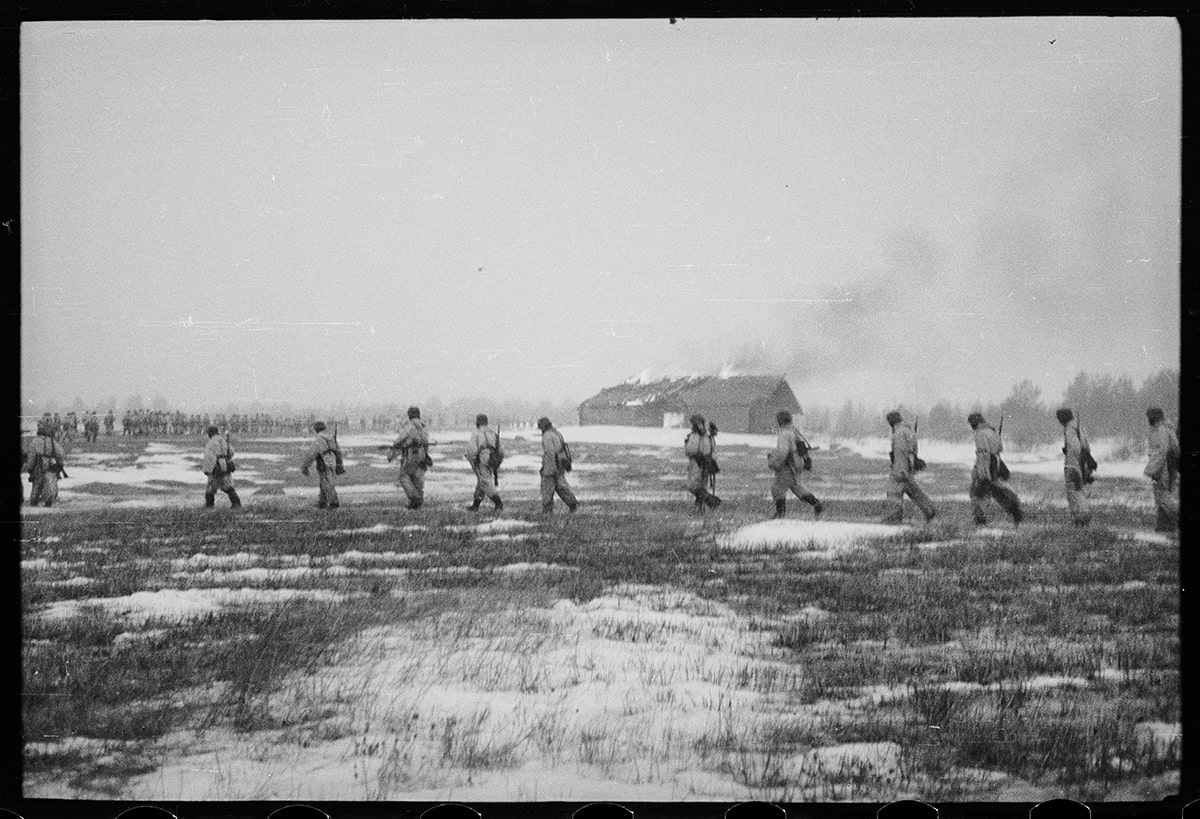
German paratroopers in winter uniforms carry out an ambush on partisans. In the background, a village house set on fire by the Germans burns. Vitebsk Region, Belarus, USSR. Winter 1941-42
German paratroopers in winter uniforms carry out an ambush on partisans. In the background, a village house set on fire by the Germans burns. Vitebsk Region, Belarus, USSR. Winter 1941-42
More about the photo
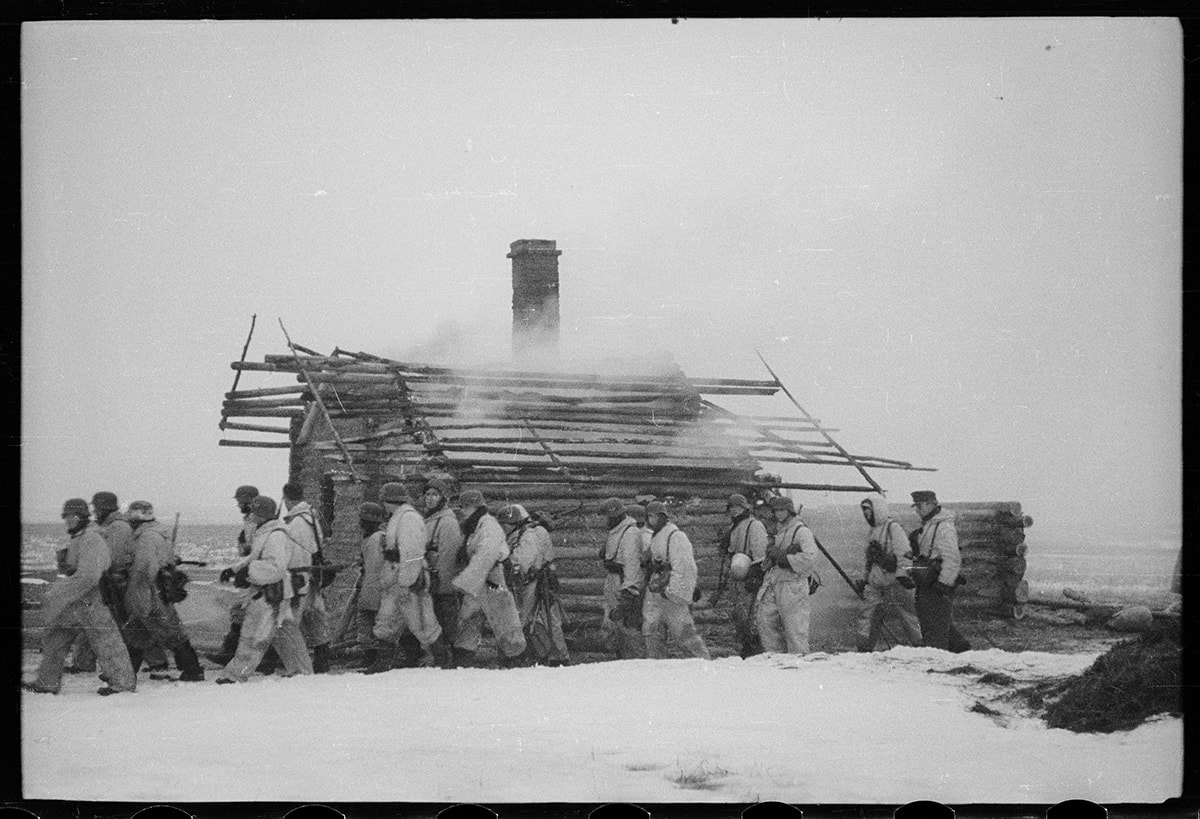
German paratroopers in winter uniforms conduct an ambush on partisans. A burned-out village house smolders in the background. Vitebsk Region, Belarus, USSR. Winter 1941-42
German paratroopers in winter uniforms conduct an ambush on partisans. A burned-out village house smolders in the background. Vitebsk Region, Belarus, USSR. Winter 1941-42
More about the photo
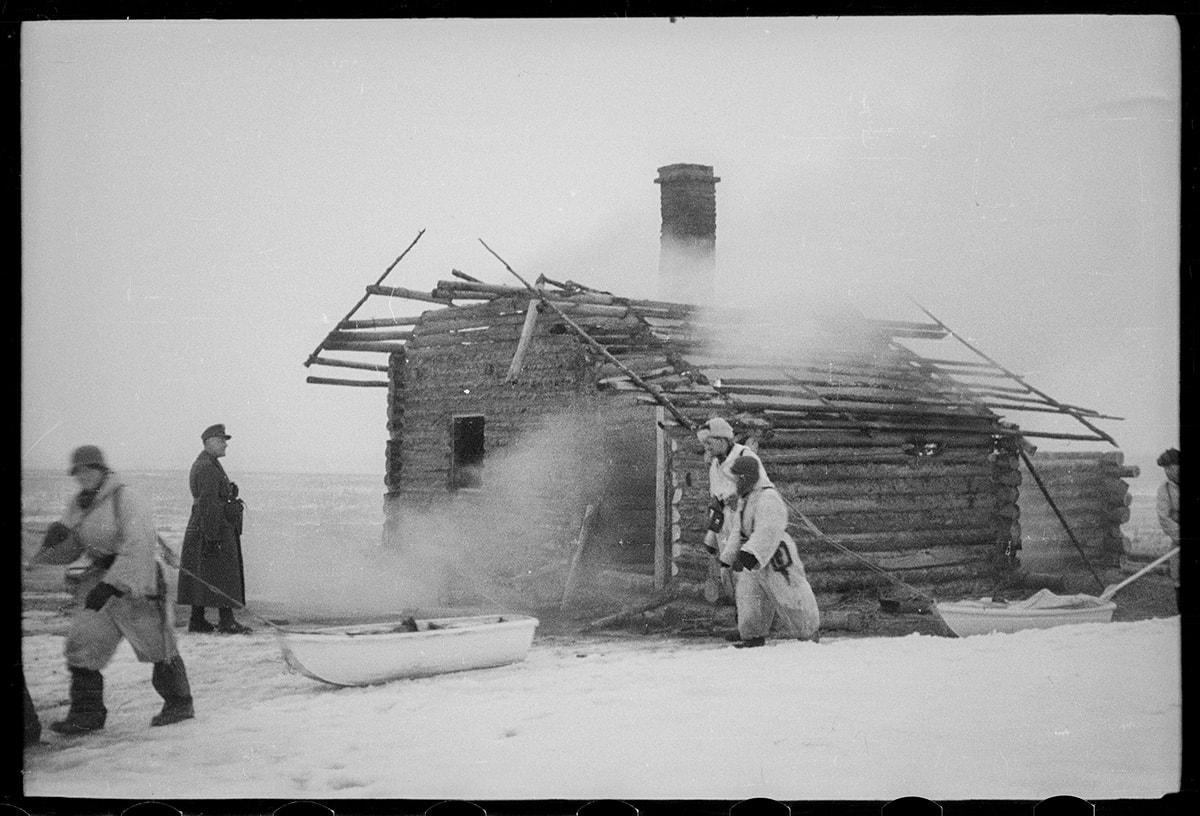
German paratroopers in winter uniforms pass a burned-out village house during an ambush on partisans. Vitebsk Region, Belarus, USSR. Winter 1941-42
German paratroopers in winter uniforms pass a burned-out village house during an ambush on partisans. Vitebsk Region, Belarus, USSR. Winter 1941-42
More about the photo
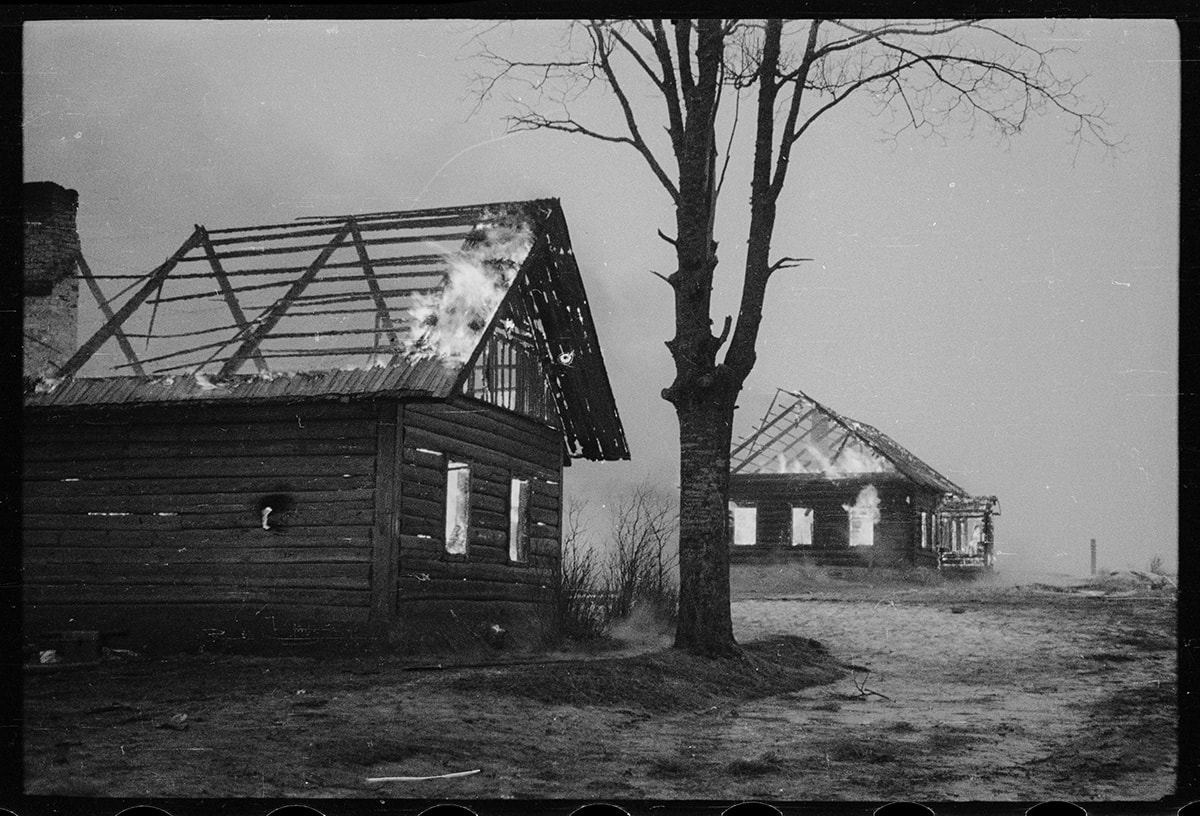
Village houses set on fire by the Germans during an attack on partisans. Vitebsk Region, Belarus, USSR. Winter 1941-42
Village houses set on fire by the Germans during an attack on partisans. Vitebsk Region, Belarus, USSR. Winter 1941-42
More about the photo
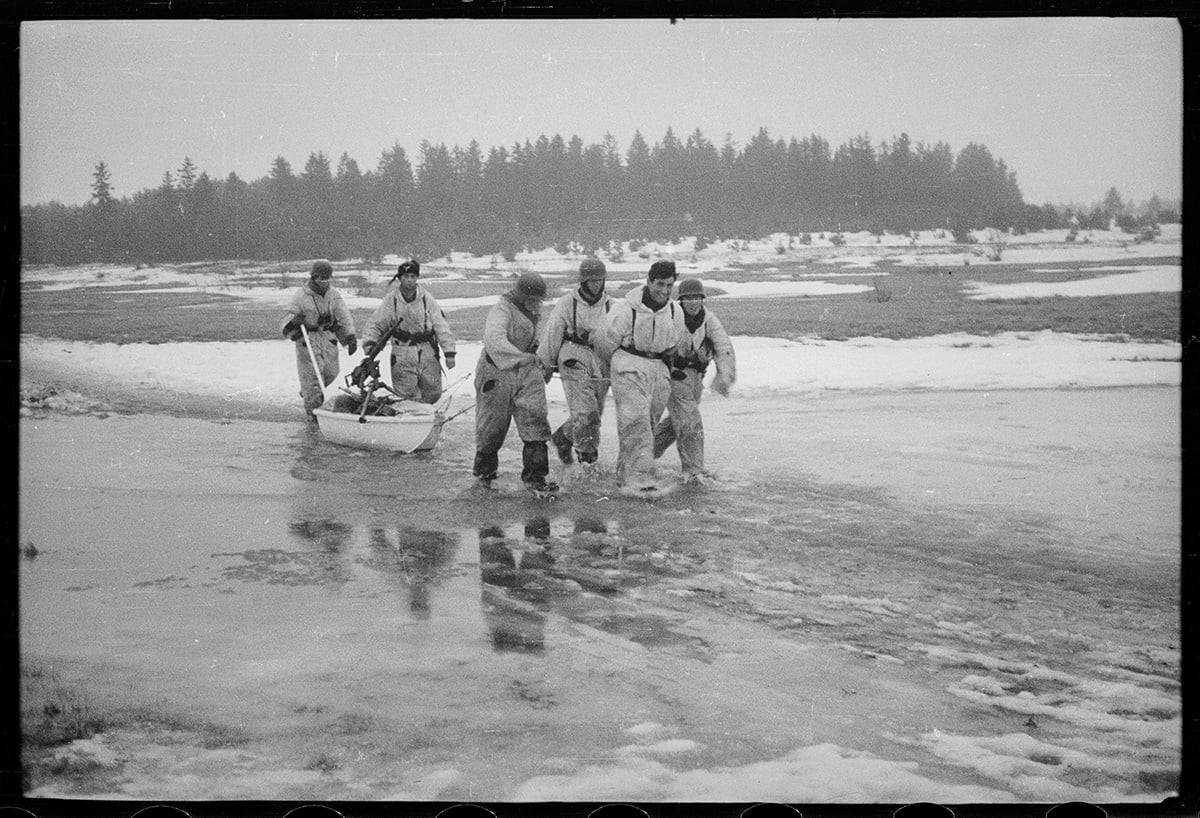
German paratroopers in winter uniforms pull a cradle containing a captured Soviet Degtyarev DS-39 machine gun and other weapons through melted snow. Vitebsk Region, Belarus, USSR. Winter 1941–42
German paratroopers in winter uniforms pull a cradle containing a captured Soviet Degtyarev DS-39 machine gun and other weapons through melted snow. Vitebsk Region, Belarus, USSR. Winter 1941–42
More about the photo
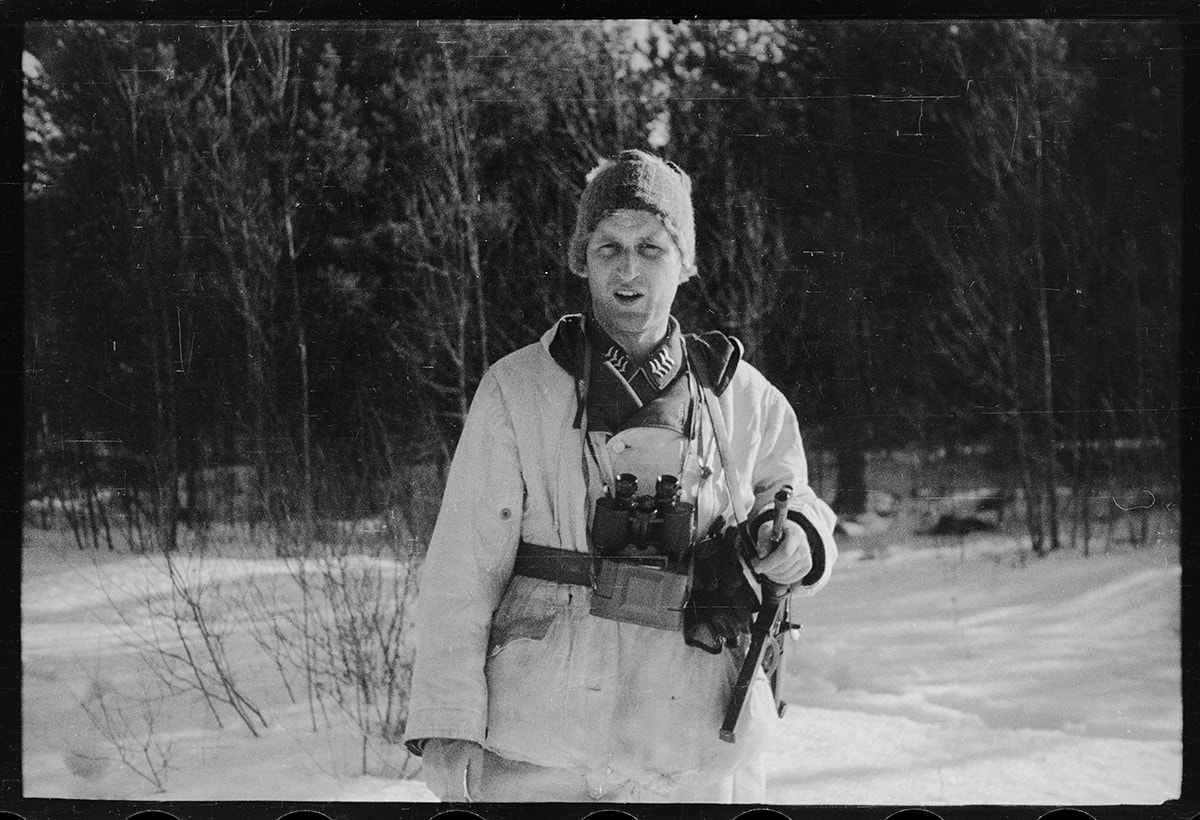
Portrait of a Luftwaffe sergeant major in winter uniform during an ambush of partisans. On his shoulder, he carries an MP 38/40 submachine gun, commonly known as a “Schmeisser,” and a pair of 10×50 service binoculars (Einheits-Doppelfernrohr). He also carries a German film camera in a case. Vitebsk Region, Belarus, USSR. Winter 1941-42
Portrait of a Luftwaffe sergeant major in winter uniform during an ambush of partisans. On his shoulder, he carries an MP 38/40 submachine gun, commonly known as a “Schmeisser,” and a pair of 10×50 service binoculars (Einheits-Doppelfernrohr). He also carries a German film camera in a case. Vitebsk Region, Belarus, USSR. Winter 1941-42
More about the photo
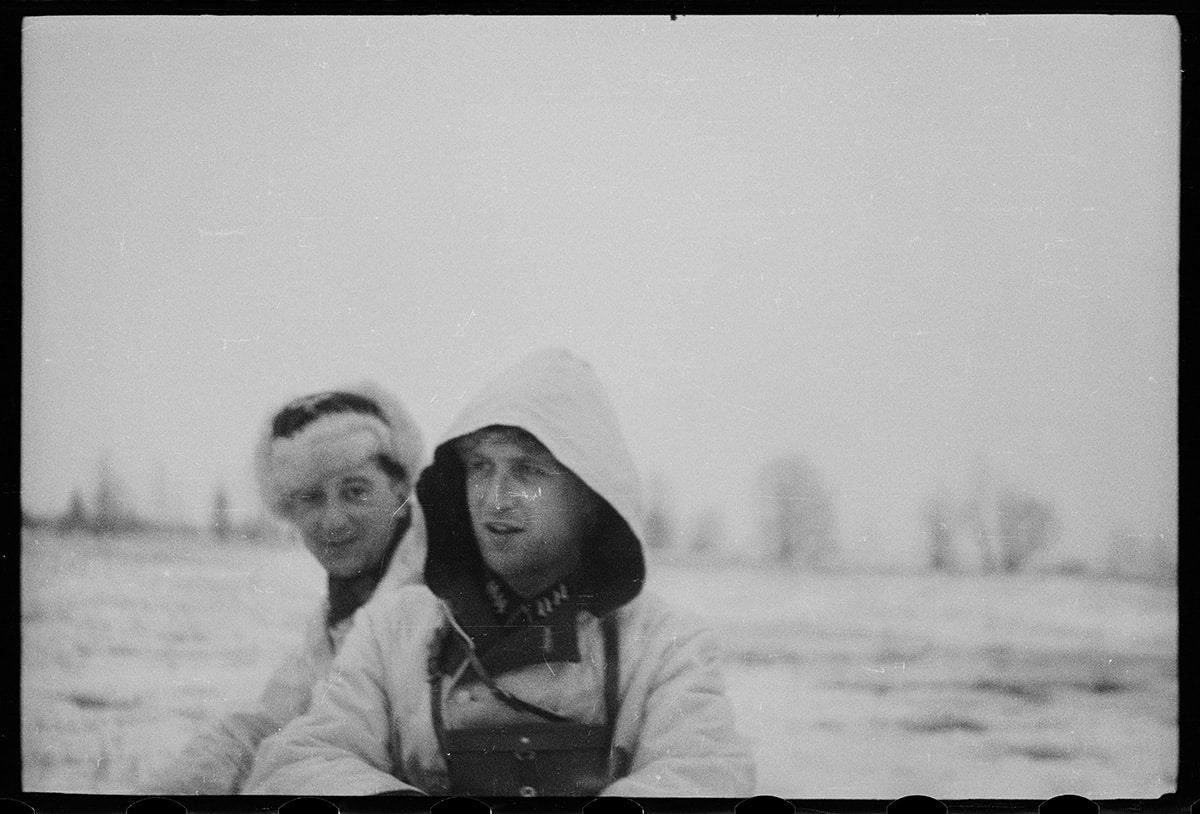
Portrait of a Luftwaffe sergeant major with a colleague in winter uniform during an attack on partisans. Vitebsk Region, Belarus, USSR. Winter 1941-42
Portrait of a Luftwaffe sergeant major with a colleague in winter uniform during an attack on partisans. Vitebsk Region, Belarus, USSR. Winter 1941-42
More about the photo
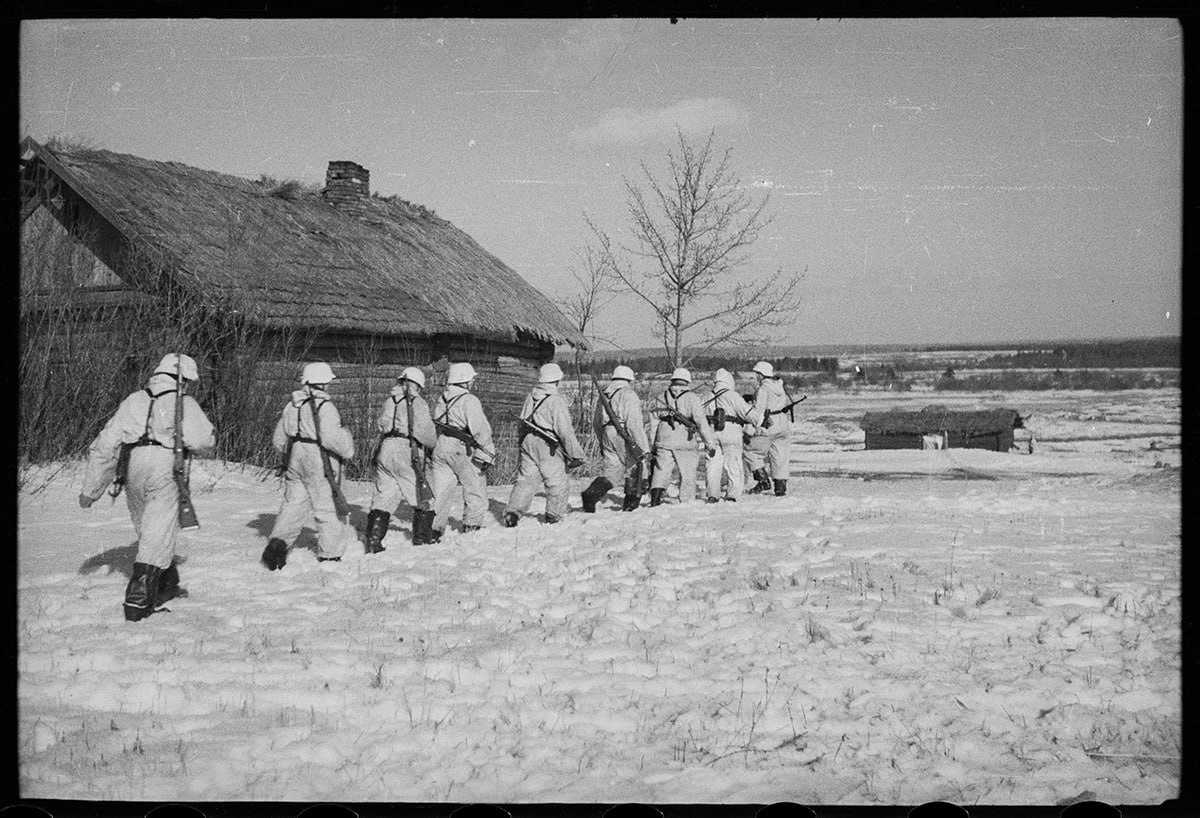
German paratroopers in winter uniforms return to their unit’s base after an ambush on partisans in one of the occupied villages. Vitebsk Region, Belarus, USSR. Winter 1941–42.
German paratroopers in winter uniforms return to their unit’s base after an ambush on partisans in one of the occupied villages. Vitebsk Region, Belarus, USSR. Winter 1941–42.
More about the photo
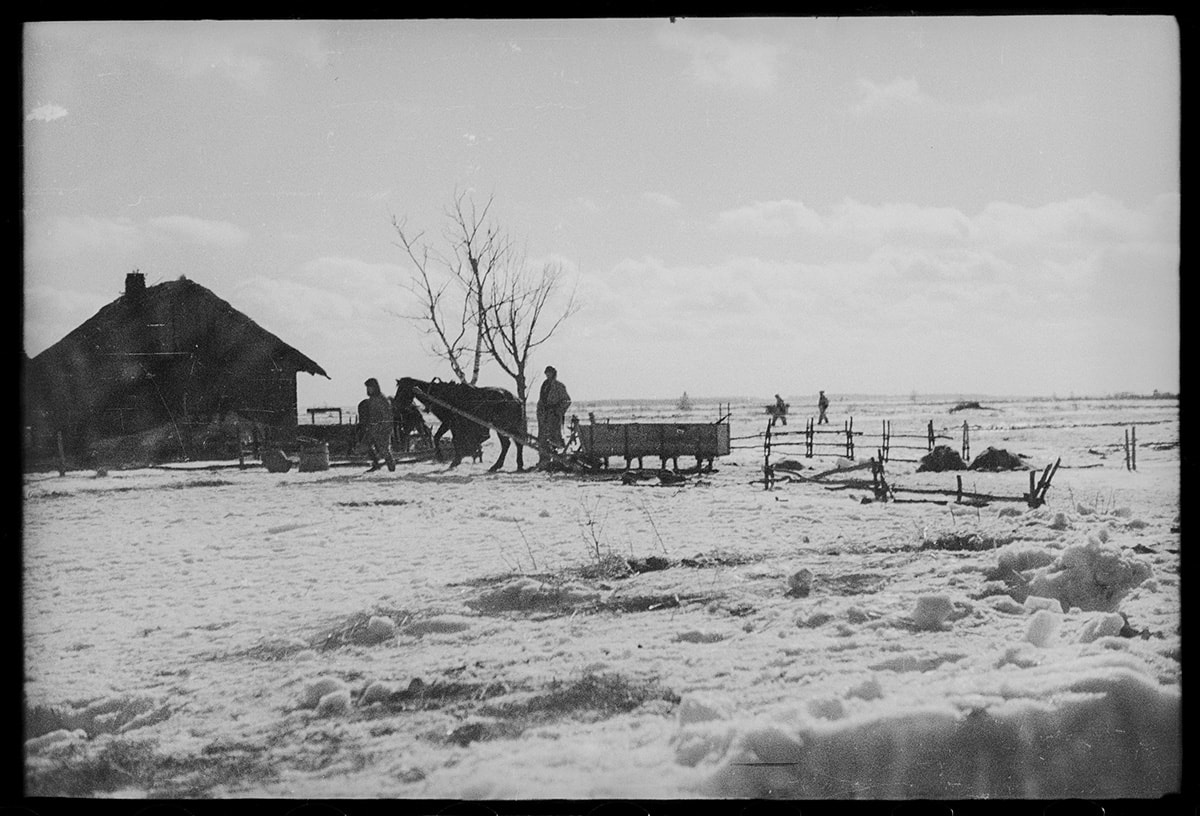
German soldiers in an occupied village. Vitebsk Region, Belarus, USSR. Winter 1941-42
German soldiers in an occupied village. Vitebsk Region, Belarus, USSR. Winter 1941-42
More about the photo
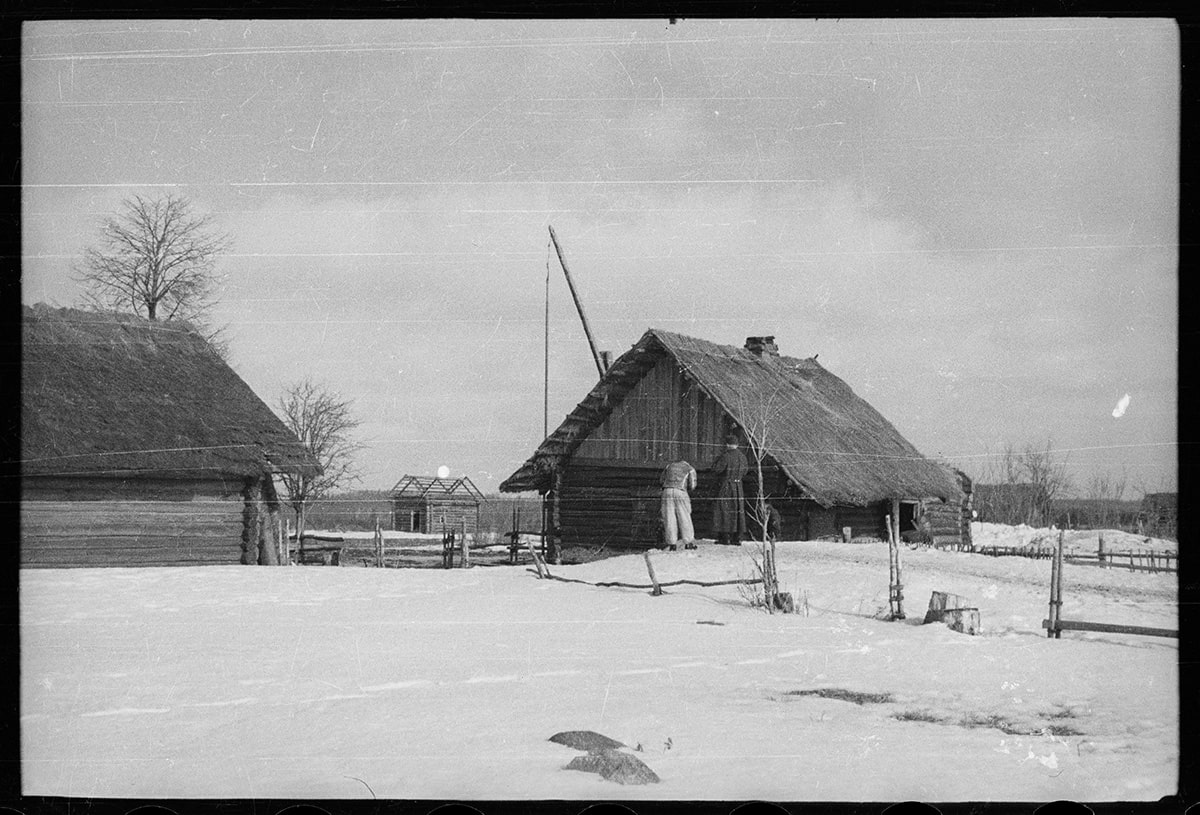
German soldiers in an occupied village. Vitebsk Region, Belarus, USSR. Winter 1941-42
German soldiers in an occupied village. Vitebsk Region, Belarus, USSR. Winter 1941-42
More about the photo
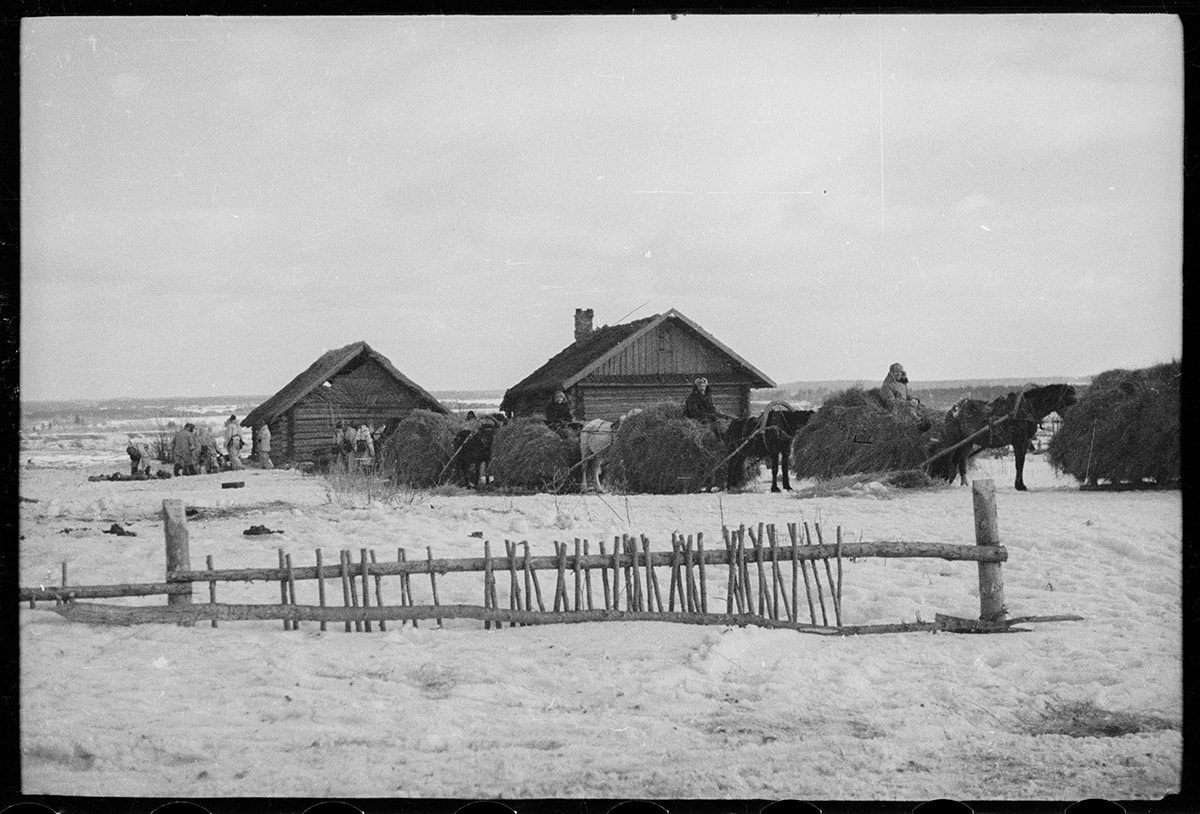
German soldiers dismantle thatched roofs from village houses in an occupied village. Vitebsk Region, Belarus, USSR. Winter 1941-42
German soldiers dismantle thatched roofs from village houses in an occupied village. Vitebsk Region, Belarus, USSR. Winter 1941-42
More about the photo
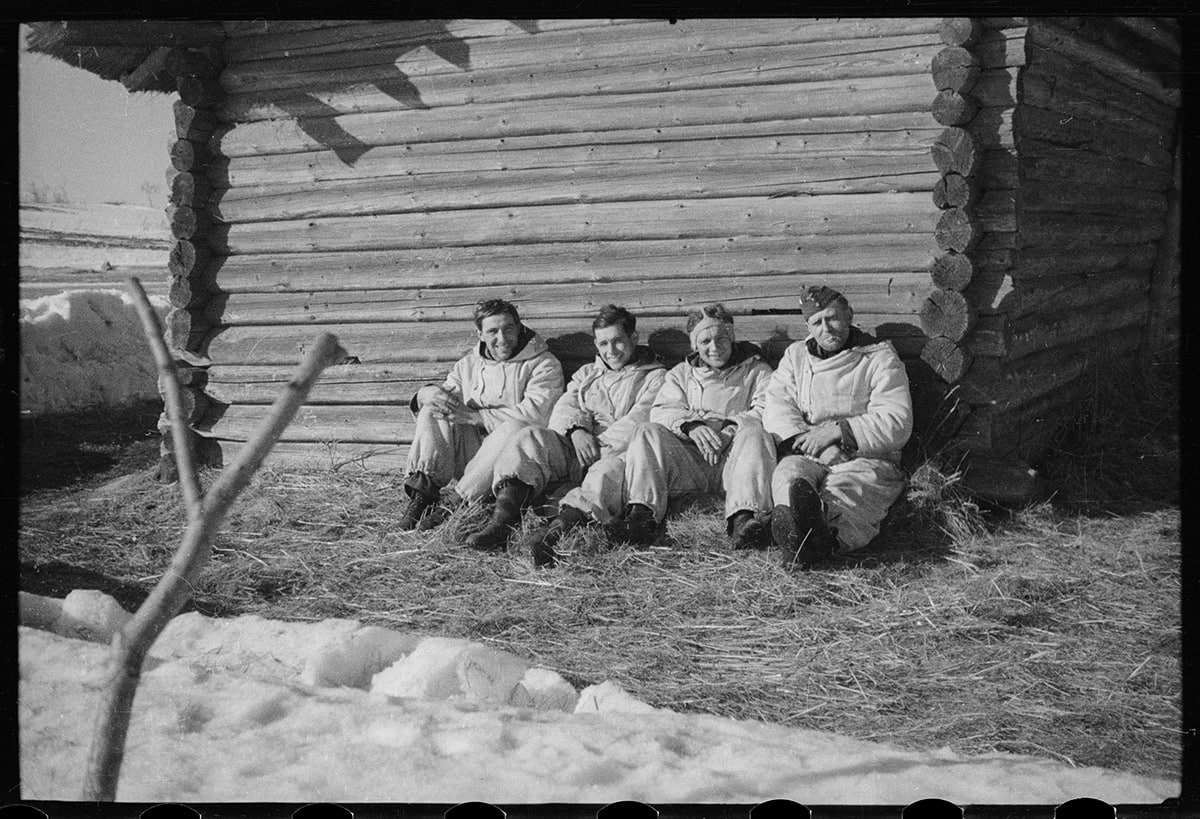
German paratroopers in winter uniforms sunbathe during an ambush on partisans. Vitebsk Region, Belarus, USSR. Winter 1941-42
German paratroopers in winter uniforms sunbathe during an ambush on partisans. Vitebsk Region, Belarus, USSR. Winter 1941-42
More about the photo
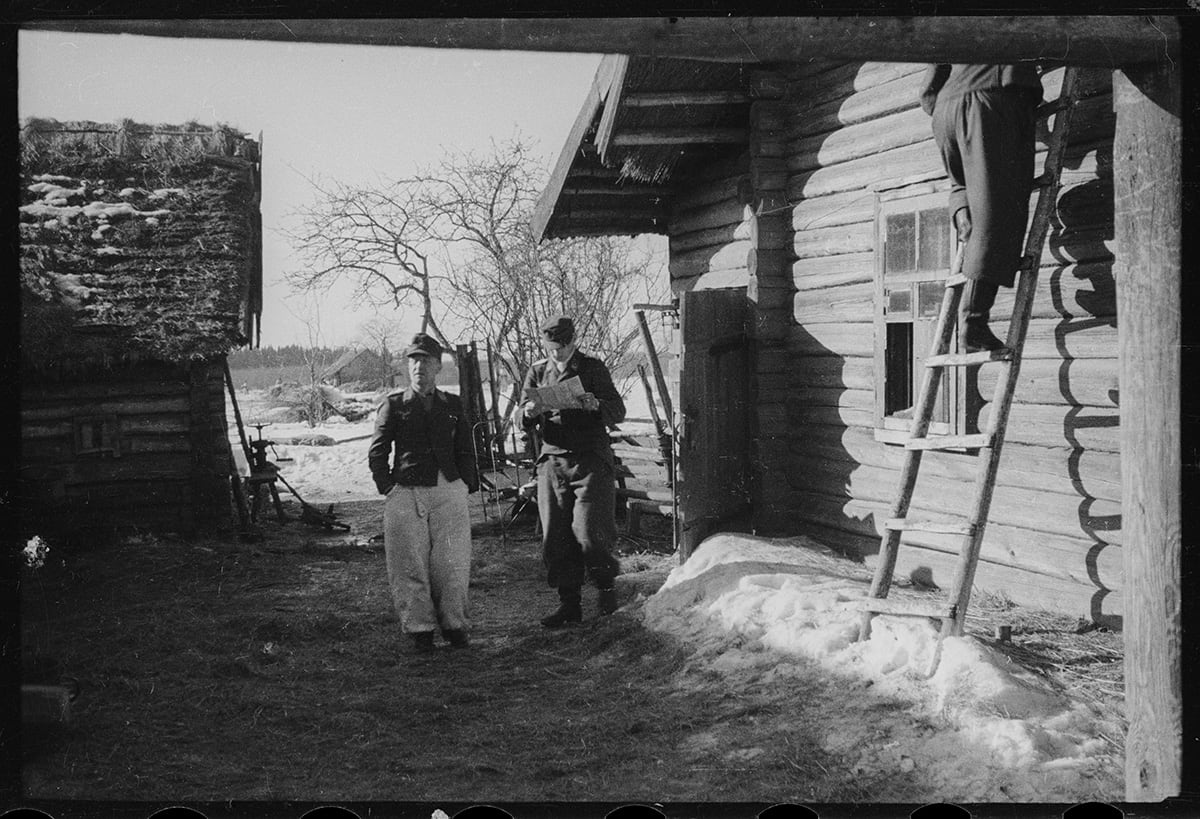
Germans inspect village houses during a raid on partisans. At right, a German soldier checks the attic of a house where partisans might be hiding. Vitebsk Region, Belarus, USSR. Winter 1941-42
Germans inspect village houses during a raid on partisans. At right, a German soldier checks the attic of a house where partisans might be hiding. Vitebsk Region, Belarus, USSR. Winter 1941-42
More about the photo
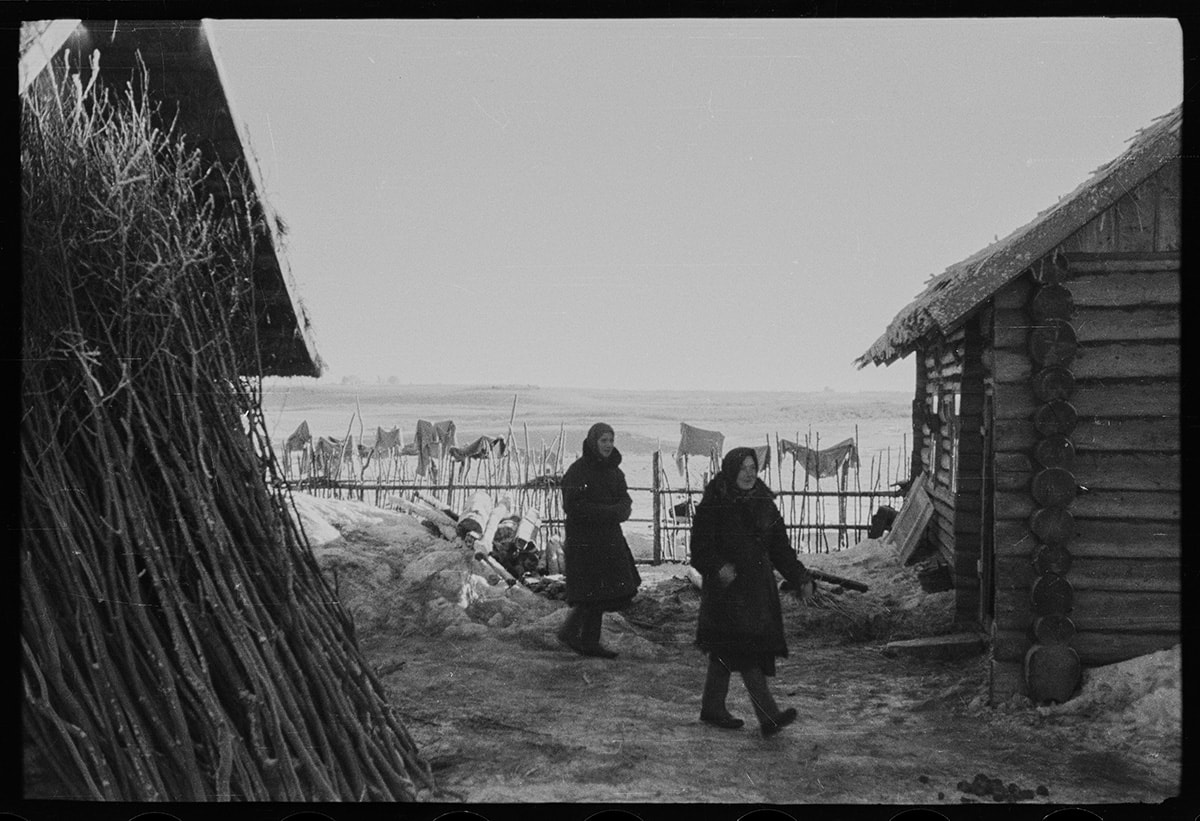
Residents in one of the occupied villages. Soldiers’ clothing, apparently washed by local women, dries on the fence. Vitebsk Region, Belarus, USSR. Winter 1941-42
Residents in one of the occupied villages. Soldiers’ clothing, apparently washed by local women, dries on the fence. Vitebsk Region, Belarus, USSR. Winter 1941-42
More about the photo
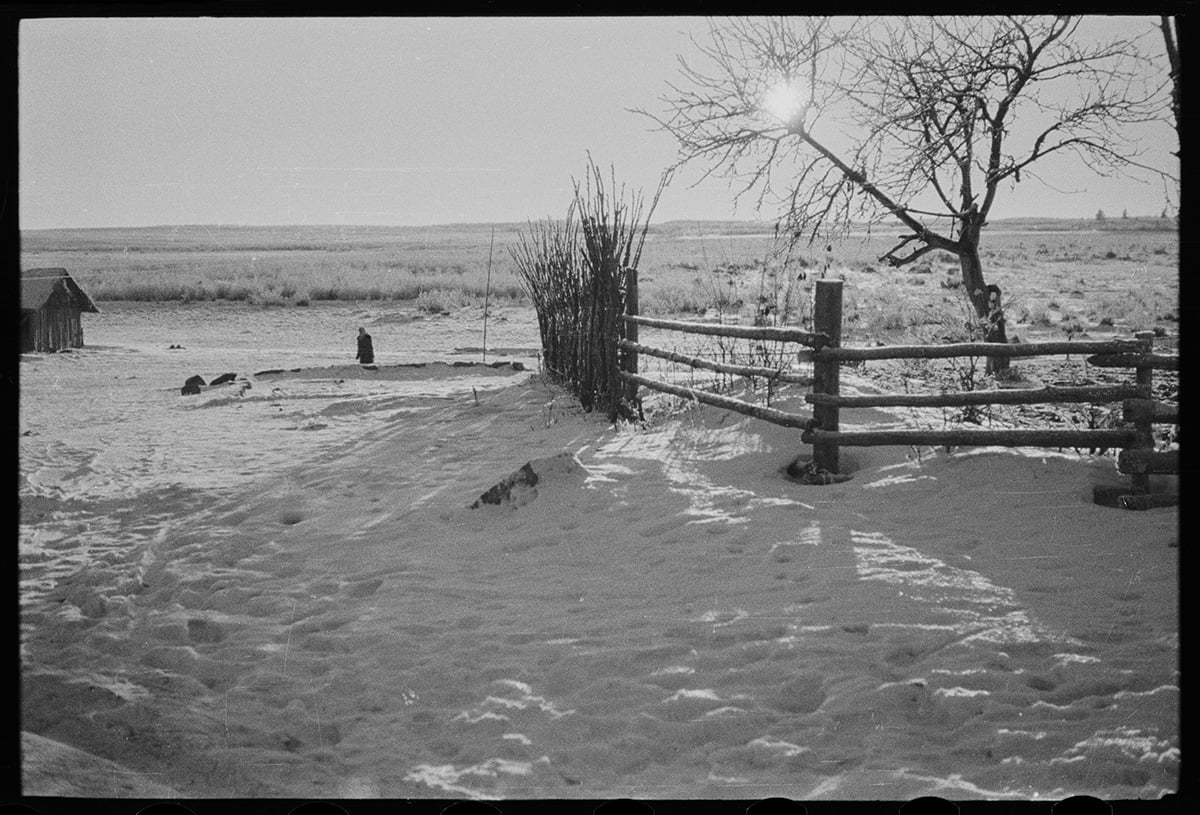
A local resident in one of the occupied villages. Vitebsk Region, Belarus, USSR. Winter 1941-42
A local resident in one of the occupied villages. Vitebsk Region, Belarus, USSR. Winter 1941-42
More about the photo
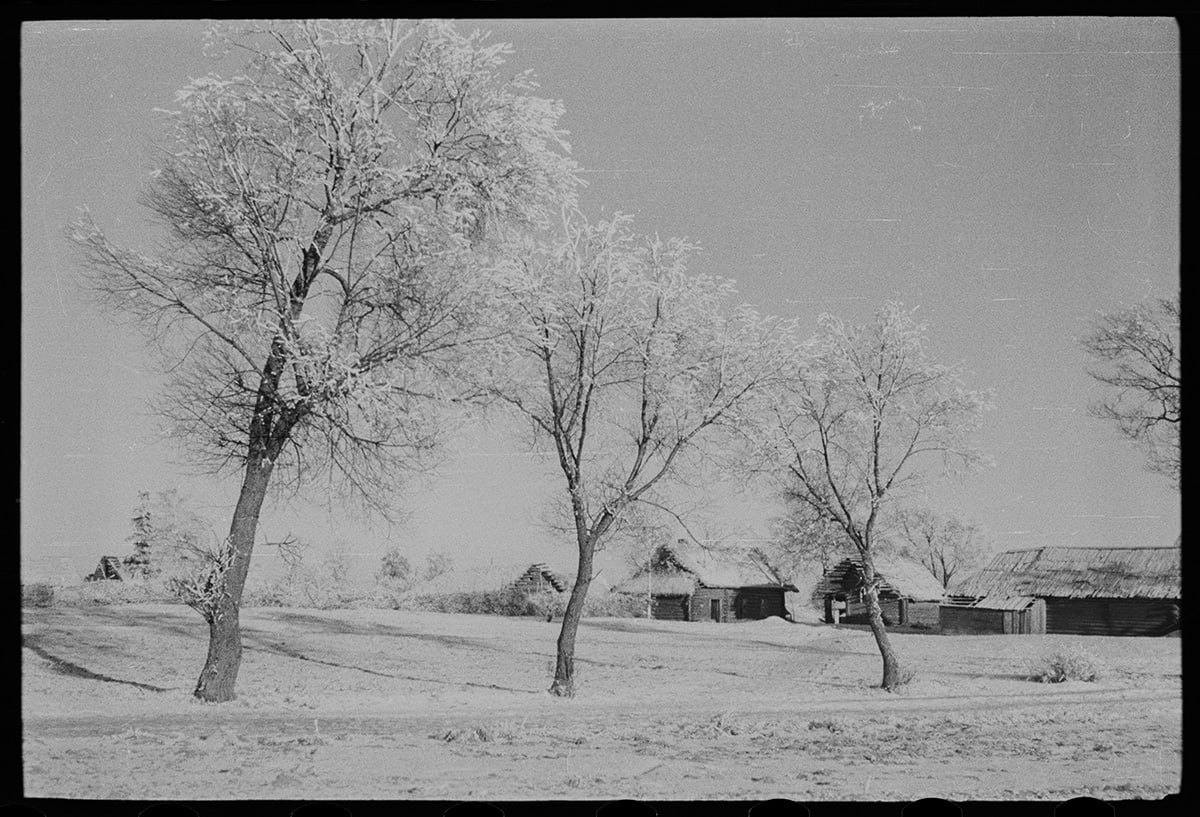
Landscape of one of the occupied villages. Judging by the frozen branches, the frost was unusually severe for the Germans. Vitebsk Region, Belarus, USSR. Winter 1941-42
Landscape of one of the occupied villages. Judging by the frozen branches, the frost was unusually severe for the Germans. Vitebsk Region, Belarus, USSR. Winter 1941-42
More about the photo
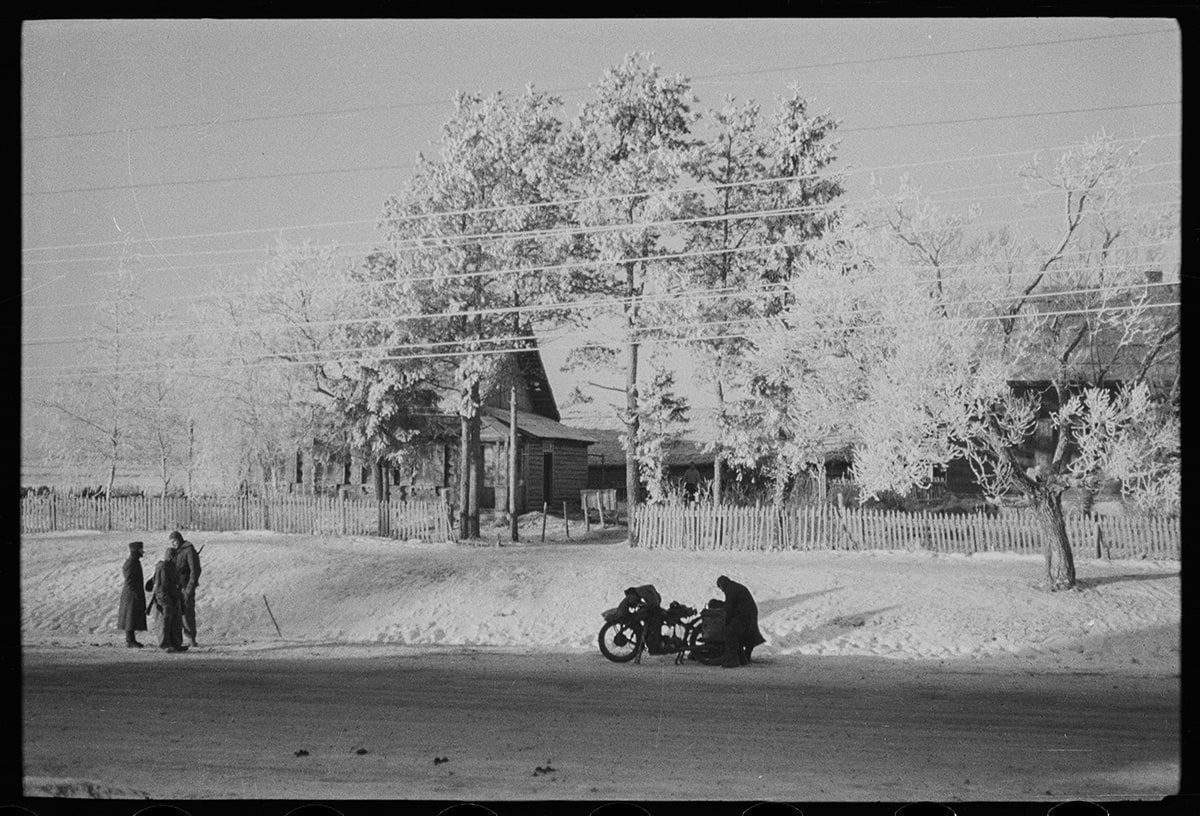
The main street of one of the occupied villages. Soldiers repair a German motorcycle by the roadside. Vitebsk Region, Belarus, USSR. Winter 1941-42
The main street of one of the occupied villages. Soldiers repair a German motorcycle by the roadside. Vitebsk Region, Belarus, USSR. Winter 1941-42
More about the photo
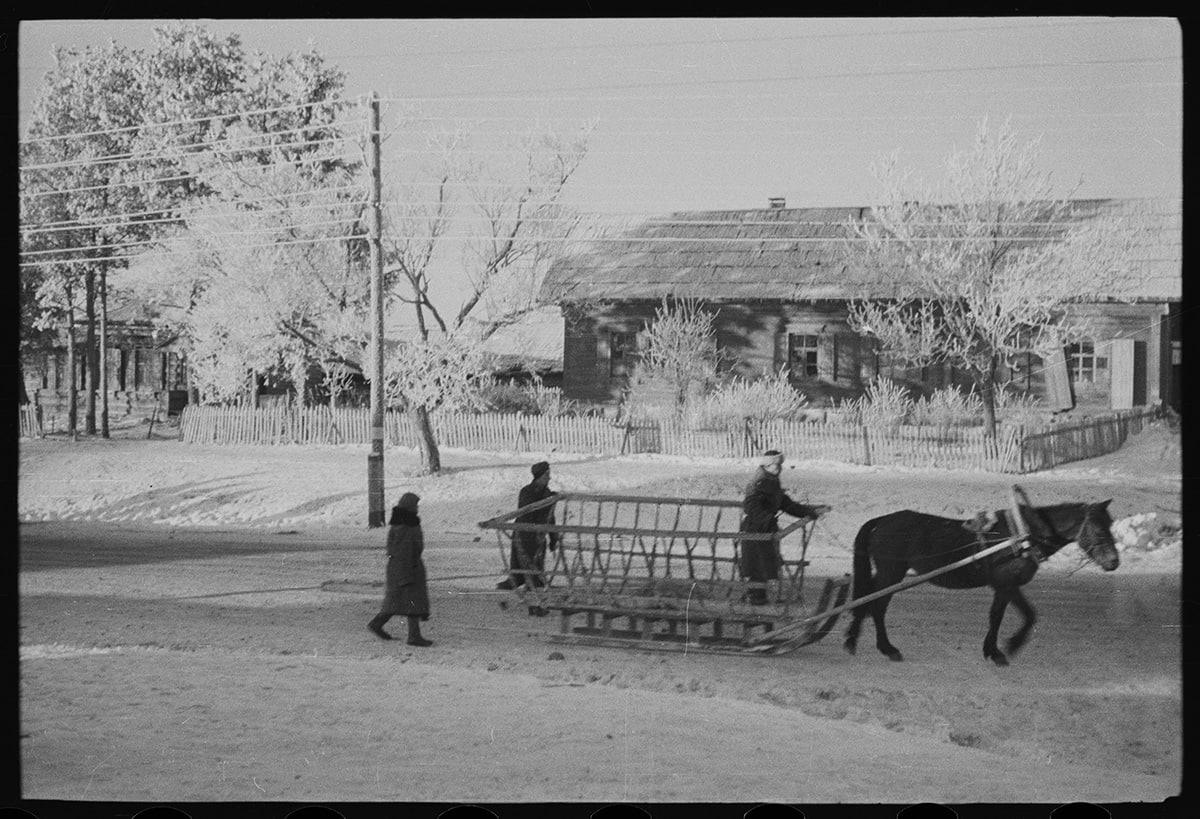
A horse-drawn sleigh on the main street of an occupied village. Vitebsk Region, Belarus, USSR. Winter 1941-42
A horse-drawn sleigh on the main street of an occupied village. Vitebsk Region, Belarus, USSR. Winter 1941-42
More about the photo
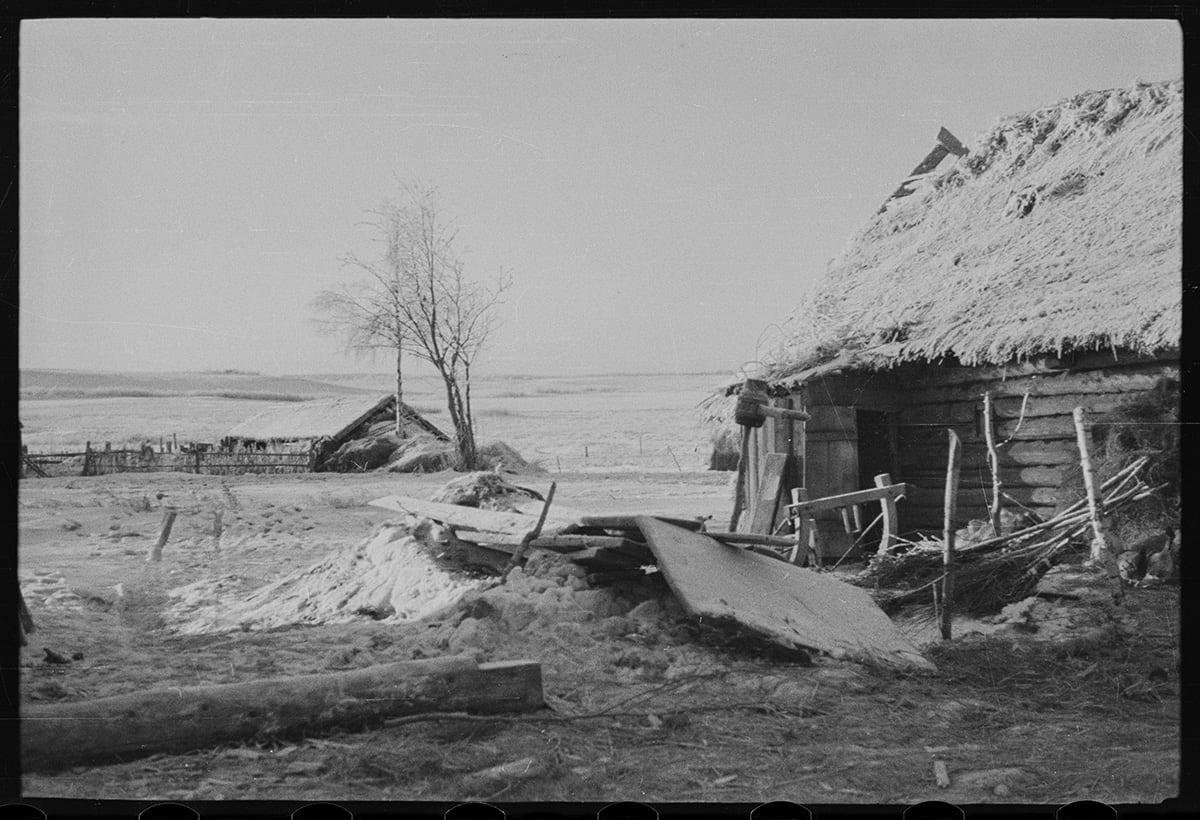
Planks and logs next to one of the destroyed village houses. Vitebsk Region, Belarus, USSR. Winter 1941-42
Planks and logs next to one of the destroyed village houses. Vitebsk Region, Belarus, USSR. Winter 1941-42
More about the photo
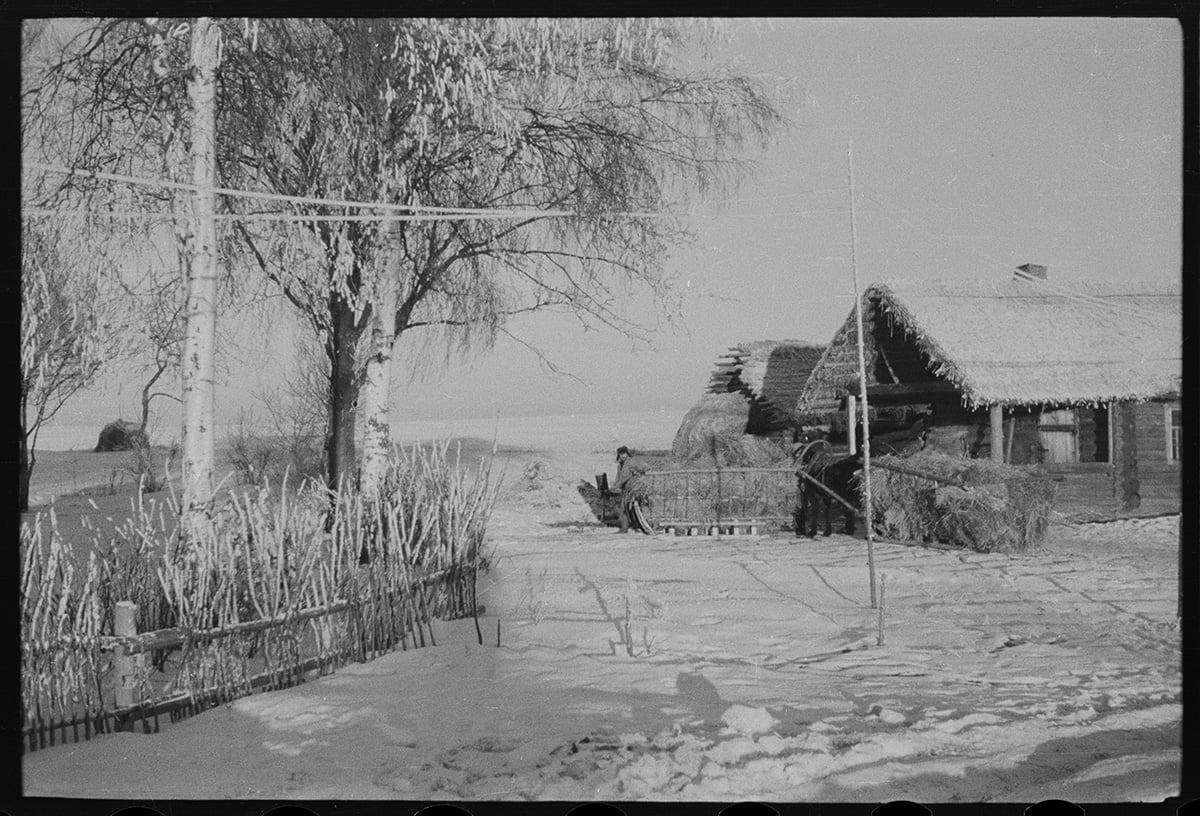
A horse-drawn sleigh full of hay near the German headquarters in an occupied village. Vitebsk Region, Belarus, USSR. Winter 1941-42
A horse-drawn sleigh full of hay near the German headquarters in an occupied village. Vitebsk Region, Belarus, USSR. Winter 1941-42
More about the photo
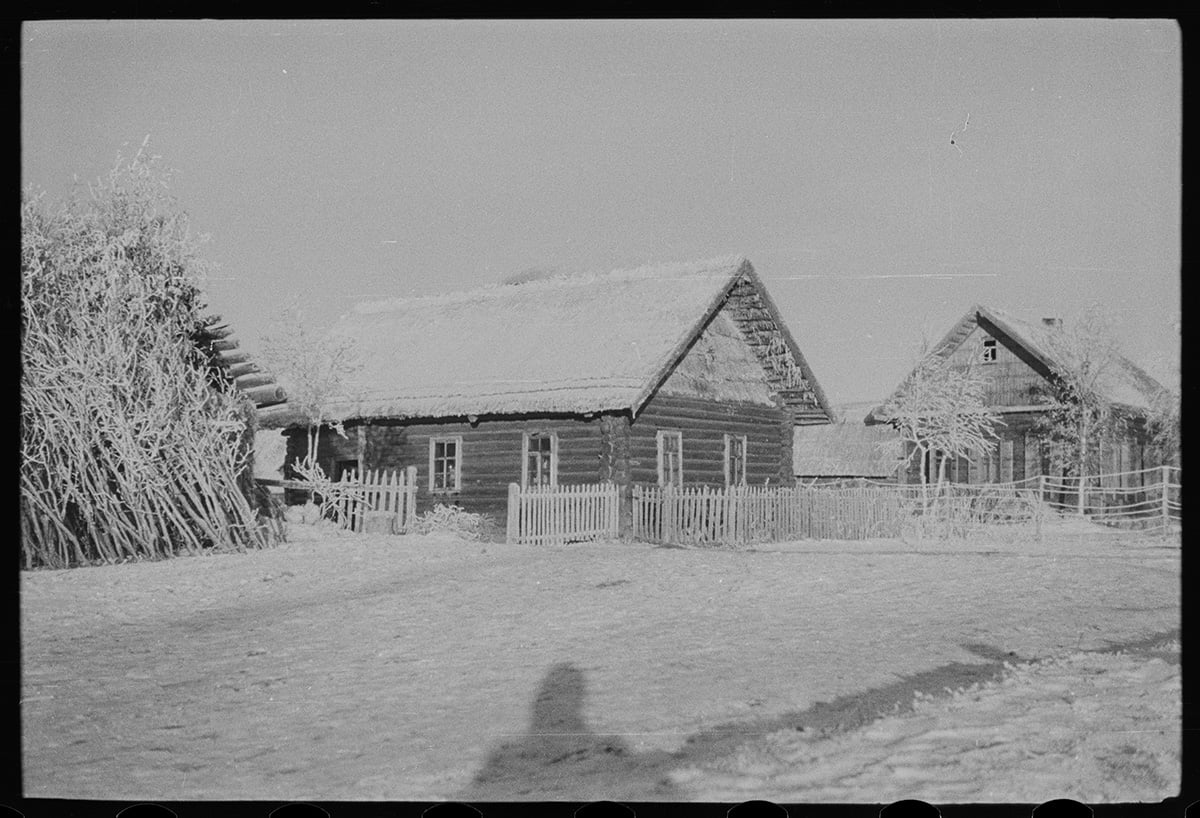
Houses where Germans lived in one of the occupied villages. A barbed wire fence can be seen in the background. Vitebsk Region, Belarus, USSR. Winter 1941-42
Houses where Germans lived in one of the occupied villages. A barbed wire fence can be seen in the background. Vitebsk Region, Belarus, USSR. Winter 1941-42
More about the photo
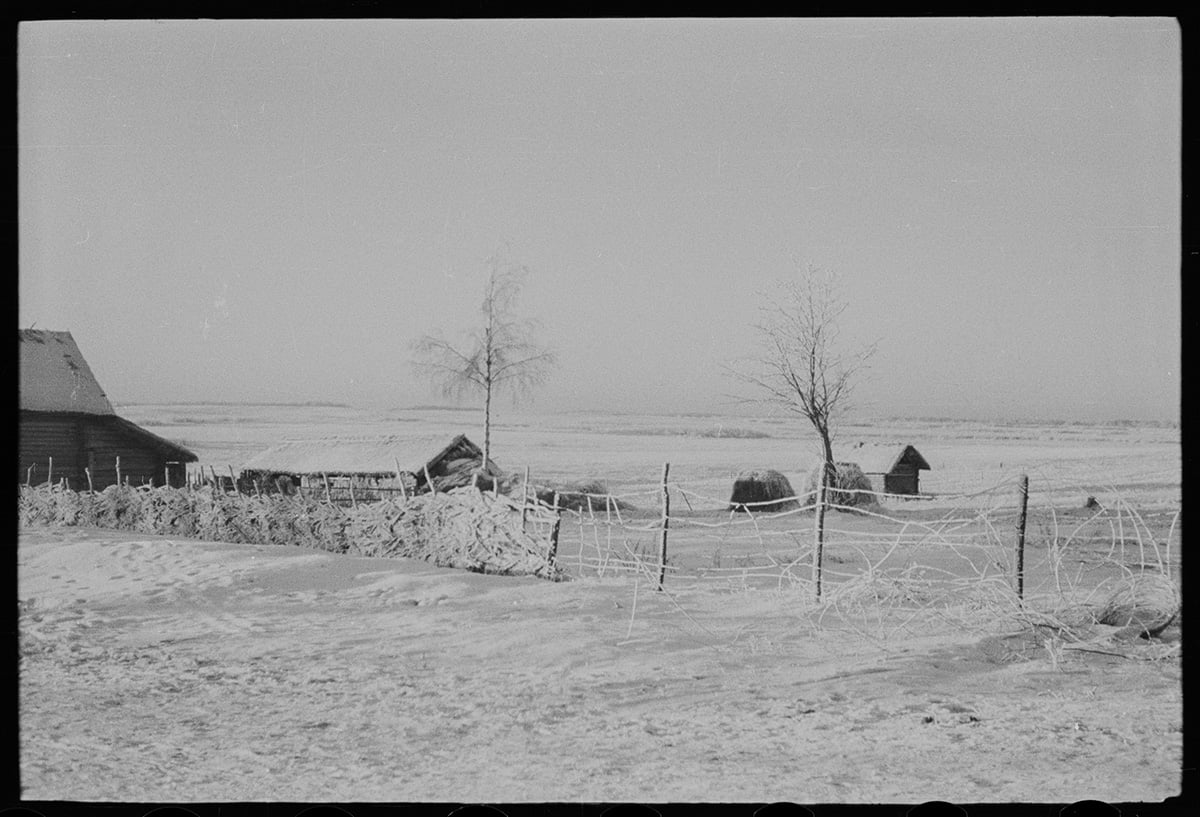
Barbed wire fence around the houses and the part where the German military was stationed. Vitebsk Region, Belarus, USSR. Winter 1941-42
Barbed wire fence around the houses and the part where the German military was stationed. Vitebsk Region, Belarus, USSR. Winter 1941-42
More about the photo
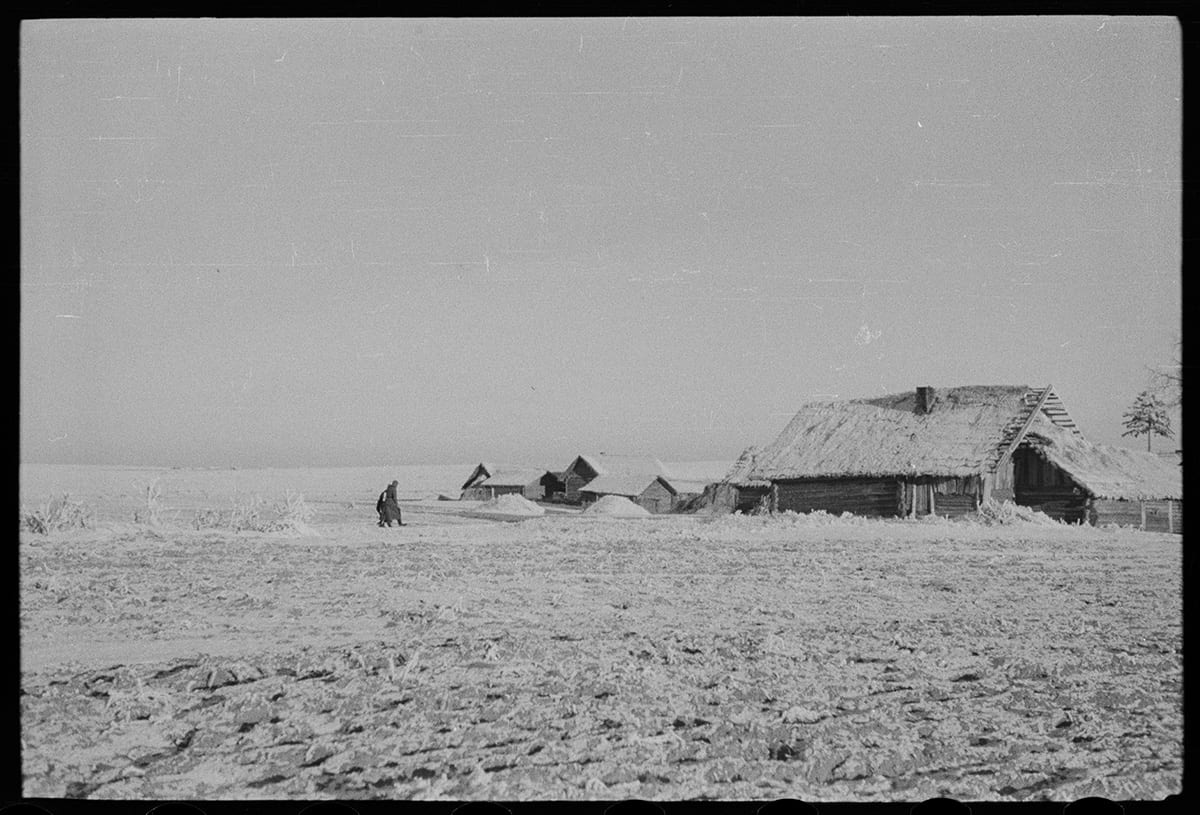
Panorama of one of the German-occupied villages in severe frost. Vitebsk Region, Belarus, USSR. Winter 1941-42
Panorama of one of the German-occupied villages in severe frost. Vitebsk Region, Belarus, USSR. Winter 1941-42
More about the photo
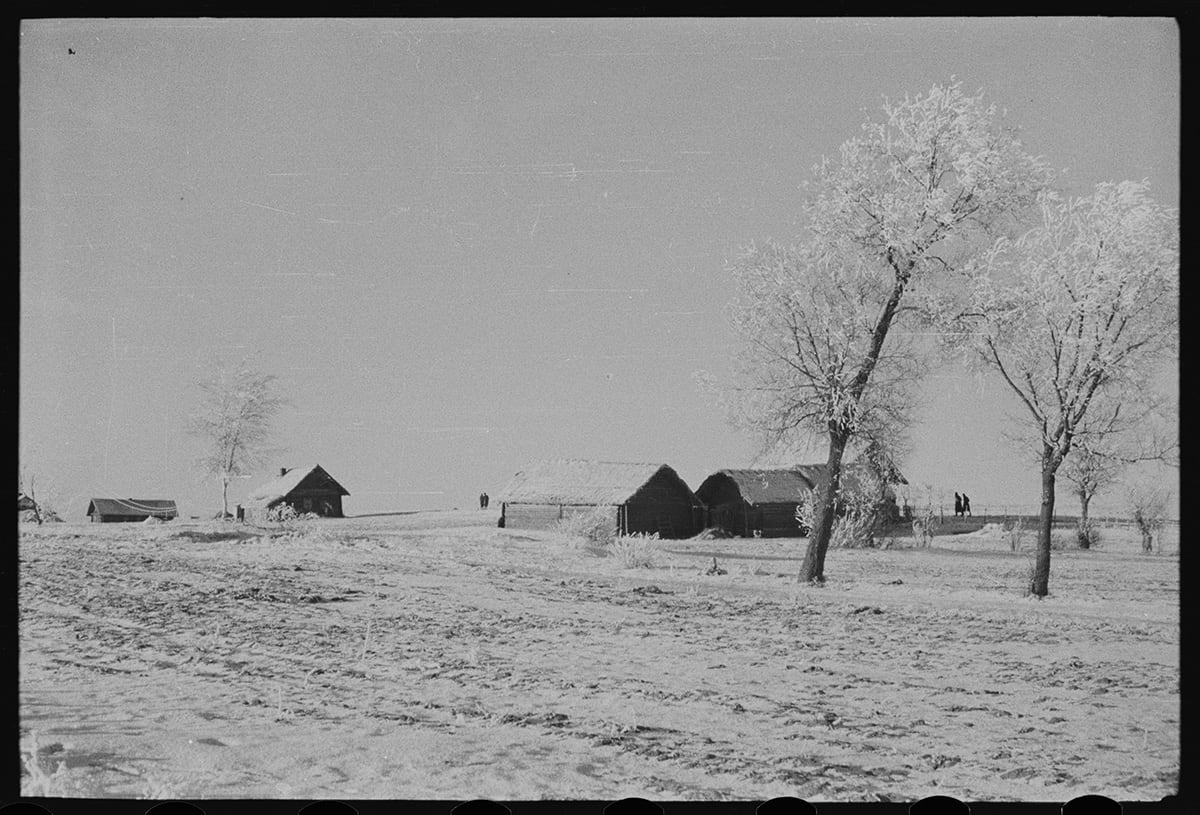
Panorama of one of the German-occupied villages in severe frost. Vitebsk Region, Belarus, USSR. Winter 1941-42
Panorama of one of the German-occupied villages in severe frost. Vitebsk Region, Belarus, USSR. Winter 1941-42
More about the photo
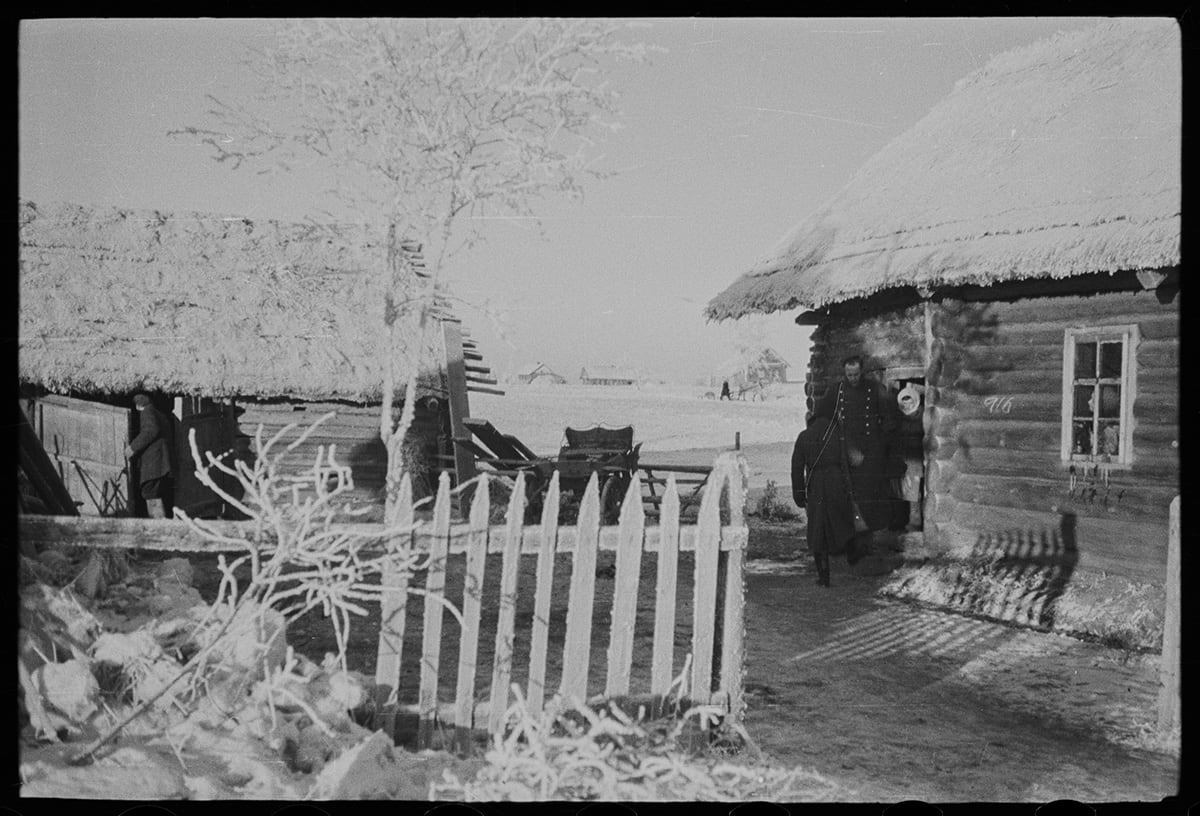
Germans inspect houses in one of the occupied villages during severe frost. Vitebsk Region, Belarus, USSR. Winter 1941-42
Germans inspect houses in one of the occupied villages during severe frost. Vitebsk Region, Belarus, USSR. Winter 1941-42
More about the photo
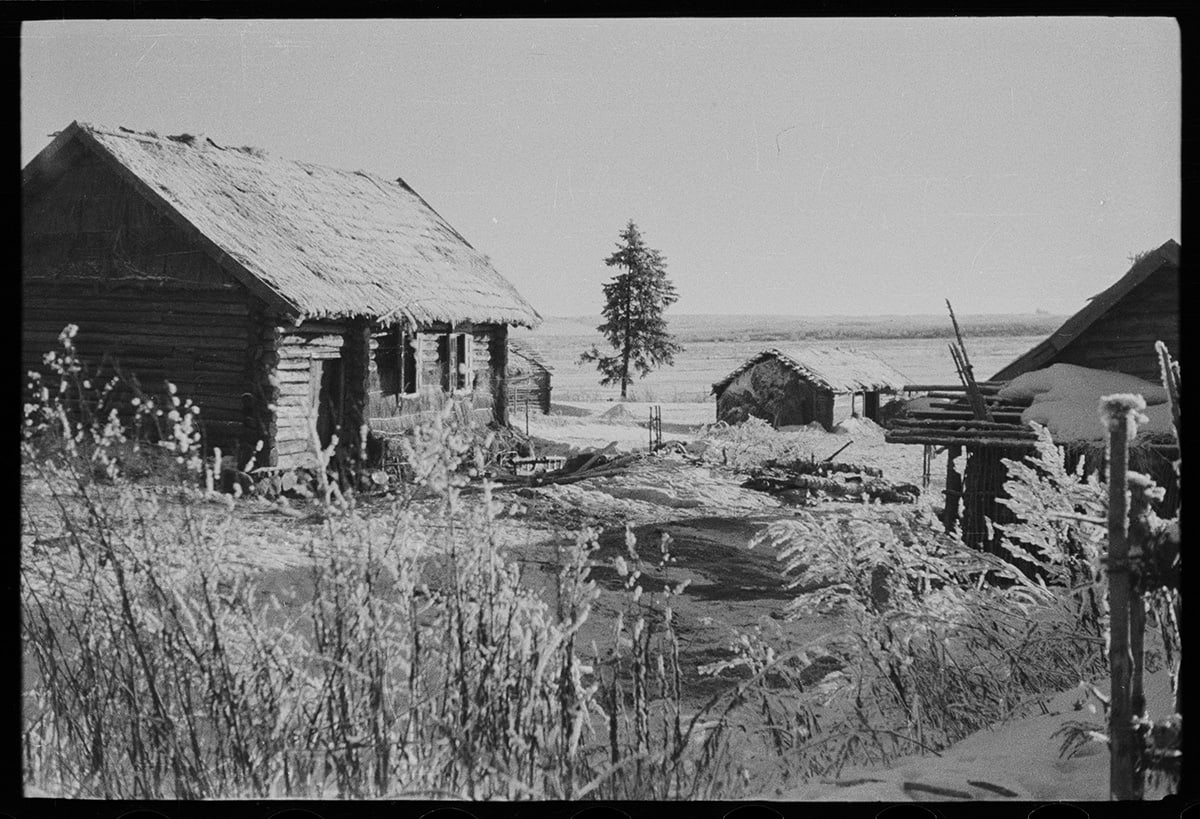
Landscape with village houses in one of the German-occupied villages during severe frost. Vitebsk Region, Belarus, USSR. Winter 1941-42
Landscape with village houses in one of the German-occupied villages during severe frost. Vitebsk Region, Belarus, USSR. Winter 1941-42
More about the photo
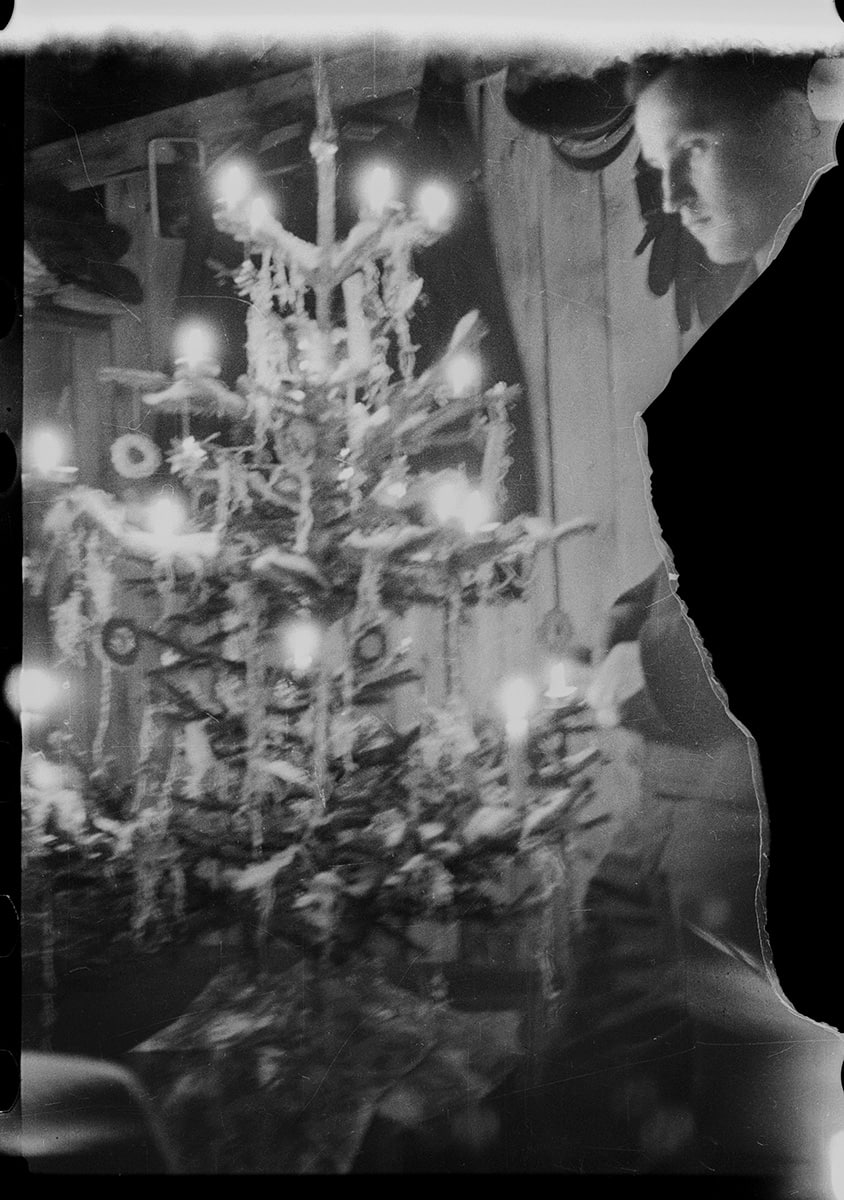
A German soldier stands next to a Christmas tree with candles at the German headquarters. Vitebsk Region, Belarus, USSR. Winter 1941-42
A German soldier stands next to a Christmas tree with candles at the German headquarters. Vitebsk Region, Belarus, USSR. Winter 1941-42
More about the photo
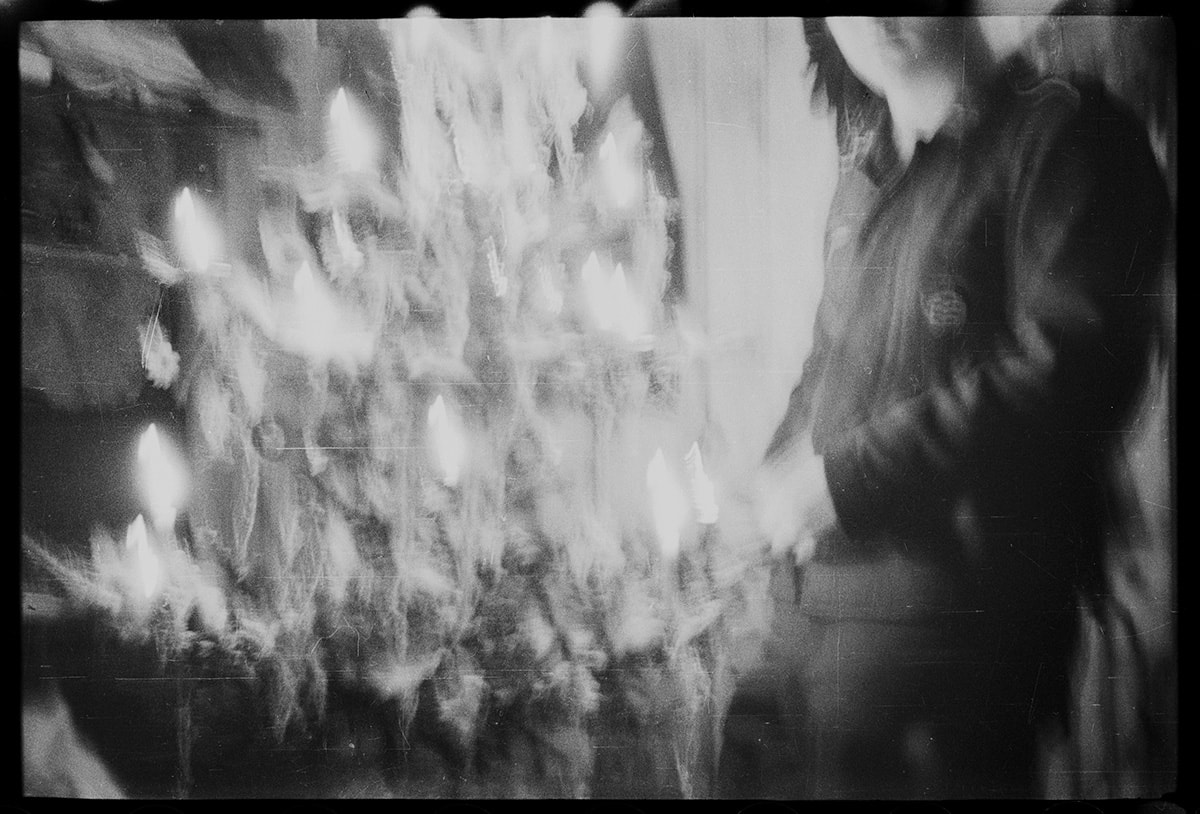
A German soldier stands next to a Christmas tree with candles at the German headquarters. Vitebsk Region, Belarus, USSR. Winter 1941-42
A German soldier stands next to a Christmas tree with candles at the German headquarters. Vitebsk Region, Belarus, USSR. Winter 1941-42
More about the photo
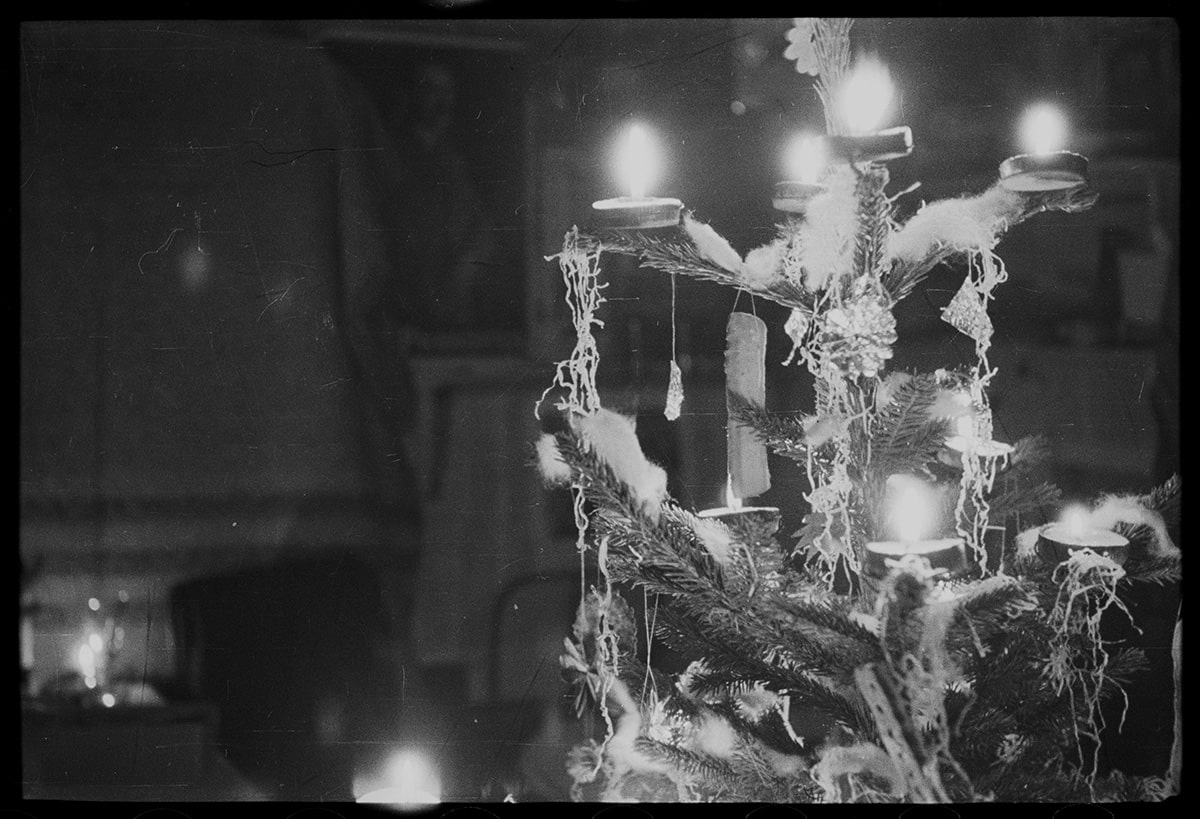
A Christmas tree with candles at a German headquarters. In the background is a poster with a picture of Hitler and the inscription “Hitler is a liberator!” Vitebsk Region, Belarus, USSR. Winter 1941-42
A Christmas tree with candles at a German headquarters. In the background is a poster with a picture of Hitler and the inscription “Hitler is a liberator!” Vitebsk Region, Belarus, USSR. Winter 1941-42
More about the photo
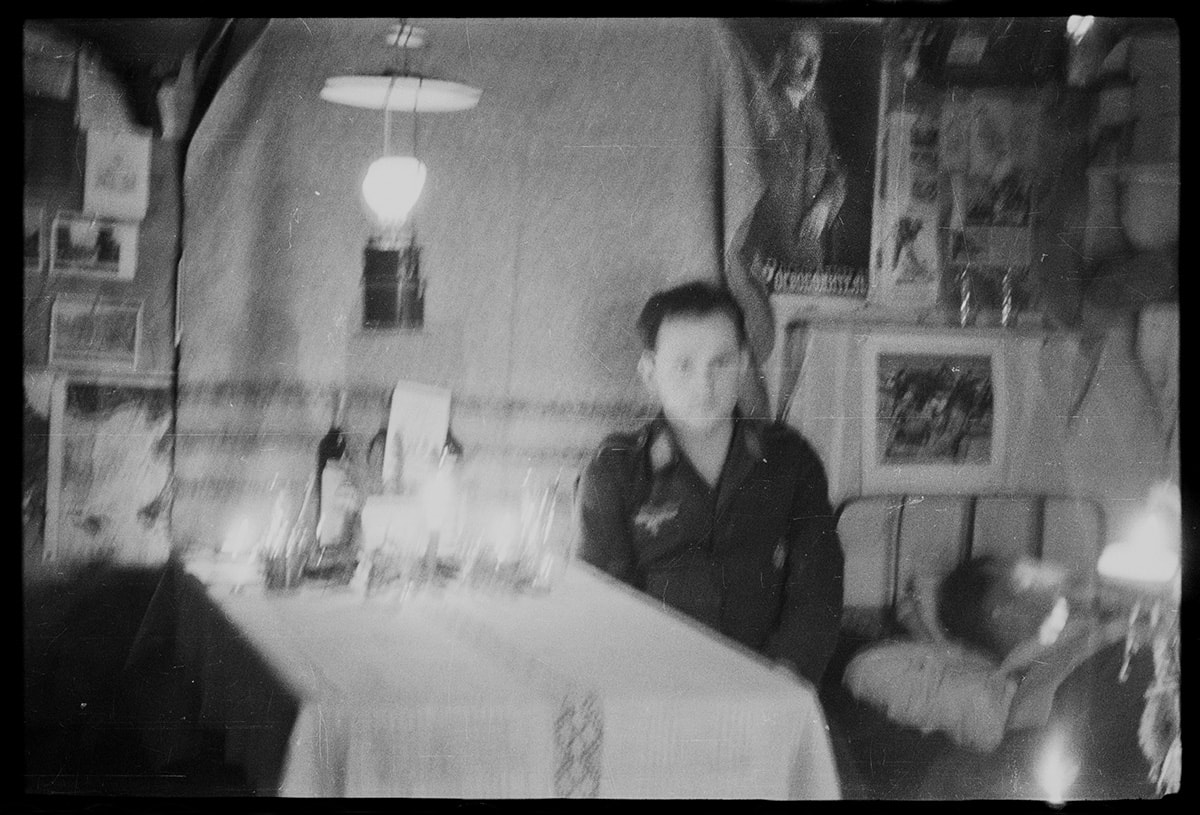
A German soldier sits at a table next to a Christmas tree with candles at the German headquarters. A poster with a picture of Hitler and the inscription “Hitler is a liberator!” is visible at the camp. Vitebsk Region, Belarus, USSR. Winter 1941-42
A German soldier sits at a table next to a Christmas tree with candles at the German headquarters. A poster with a picture of Hitler and the inscription “Hitler is a liberator!” is visible at the camp. Vitebsk Region, Belarus, USSR. Winter 1941-42
More about the photo
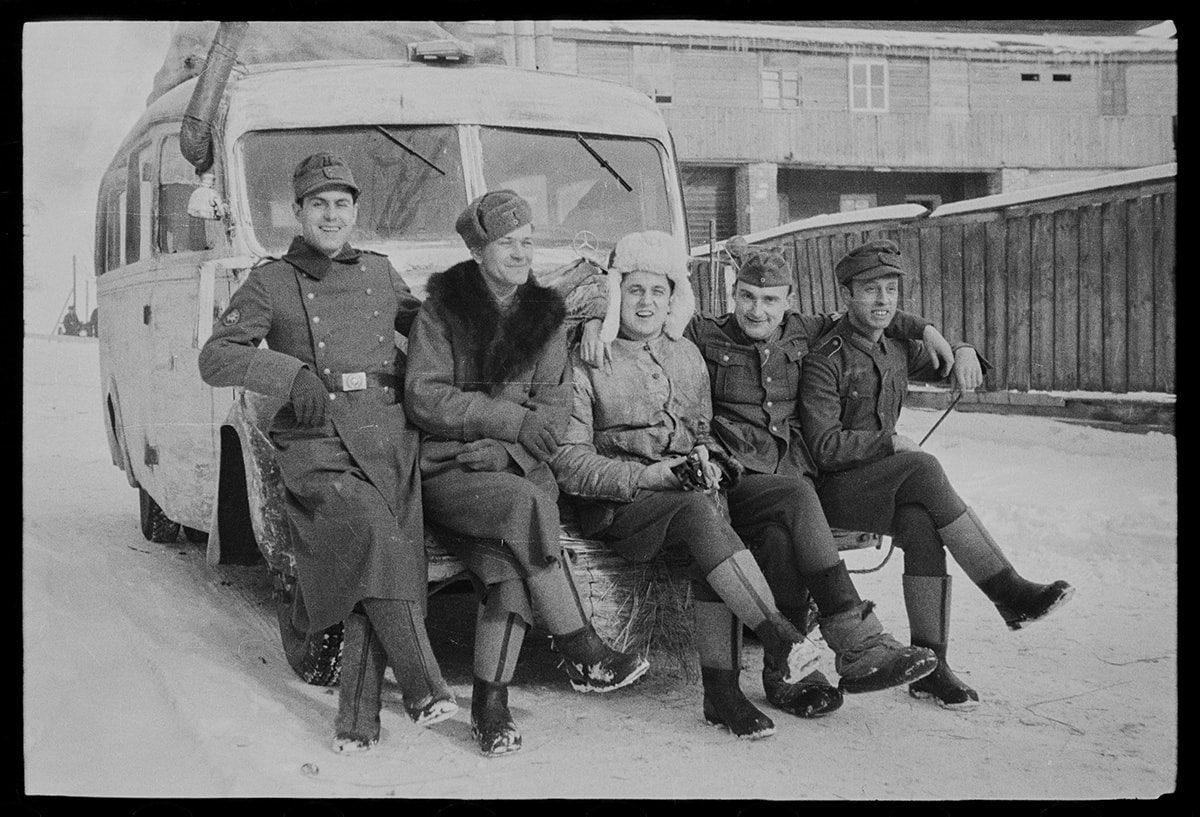
A group portrait of German soldiers and officers on the front bumper of a Mercedes-Benz O 2600 army bus in winter camouflage. On the far left is a soldier from the Mountain Infantry Division wearing the Edelweiss patch, and in the center are two Luftwaffe officers wearing special winter fur hats. Vitebsk Region, Belarus, USSR. Winter 1941-42
A group portrait of German soldiers and officers on the front bumper of a Mercedes-Benz O 2600 army bus in winter camouflage. On the far left is a soldier from the Mountain Infantry Division wearing the Edelweiss patch, and in the center are two Luftwaffe officers wearing special winter fur hats. Vitebsk Region, Belarus, USSR. Winter 1941-42
More about the photo
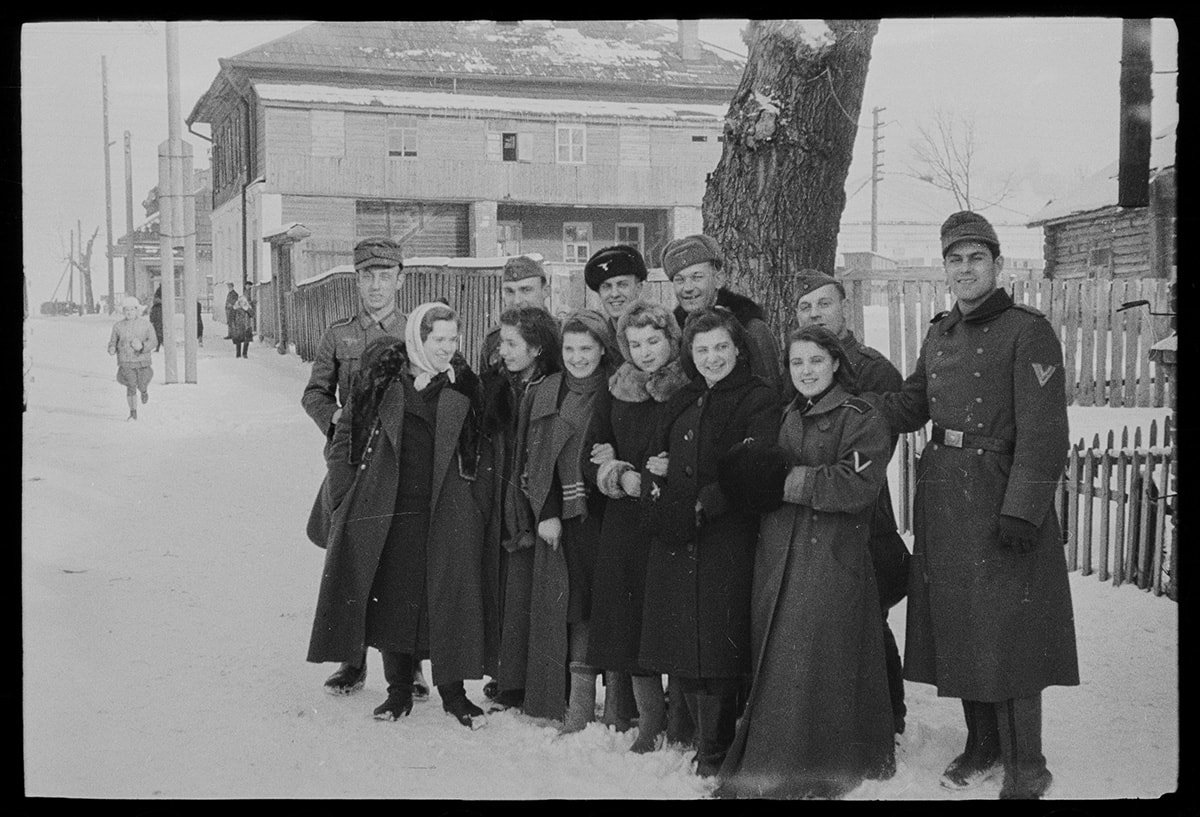
Group portrait of German soldiers and officers with local girls, some wearing German coats. Vitebsk Region, Belarus, USSR. Winter 1941–42
Group portrait of German soldiers and officers with local girls, some wearing German coats. Vitebsk Region, Belarus, USSR. Winter 1941–42
More about the photo
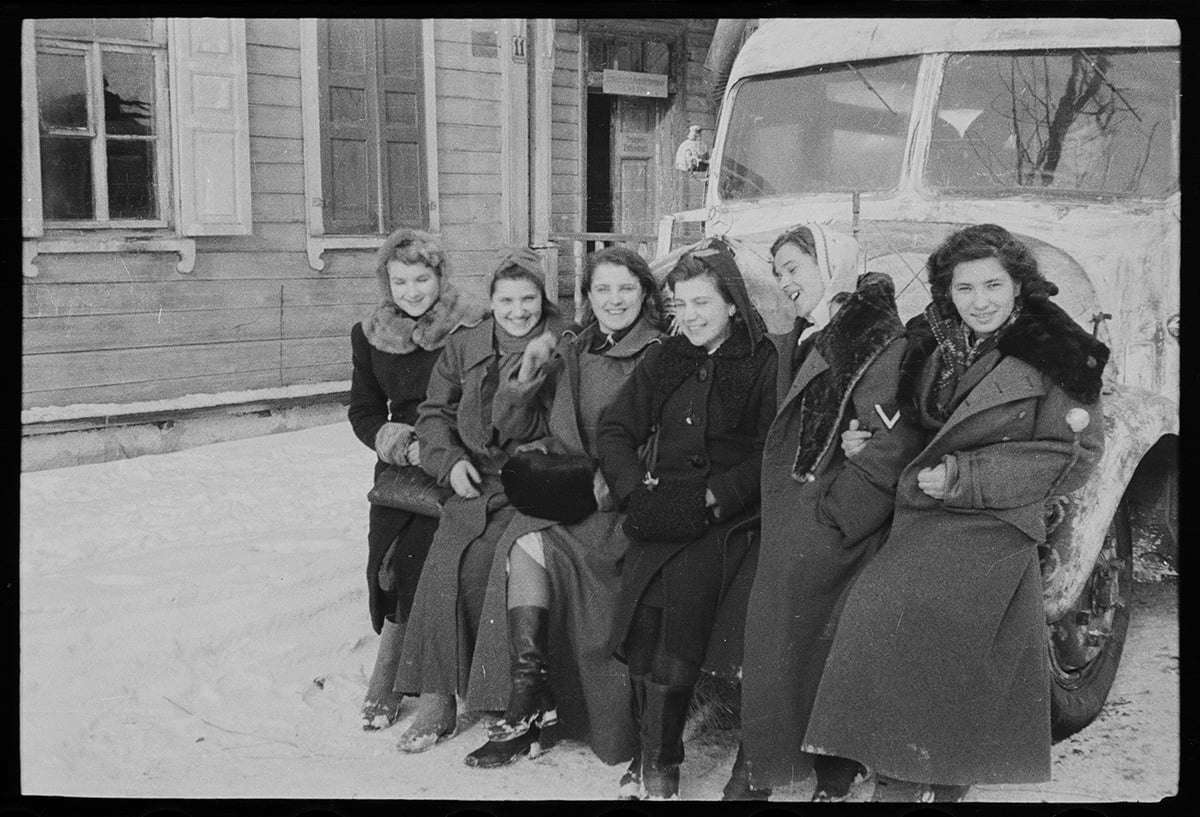
A group portrait of local girls, some wearing German coats, on the front bumper of a Mercedes-Benz O 2600 army bus in winter camouflage. A smiling German soldier is at the wheel. Vitebsk Region, Belarus, USSR. Winter 1941-42
A group portrait of local girls, some wearing German coats, on the front bumper of a Mercedes-Benz O 2600 army bus in winter camouflage. A smiling German soldier is at the wheel. Vitebsk Region, Belarus, USSR. Winter 1941-42
More about the photo
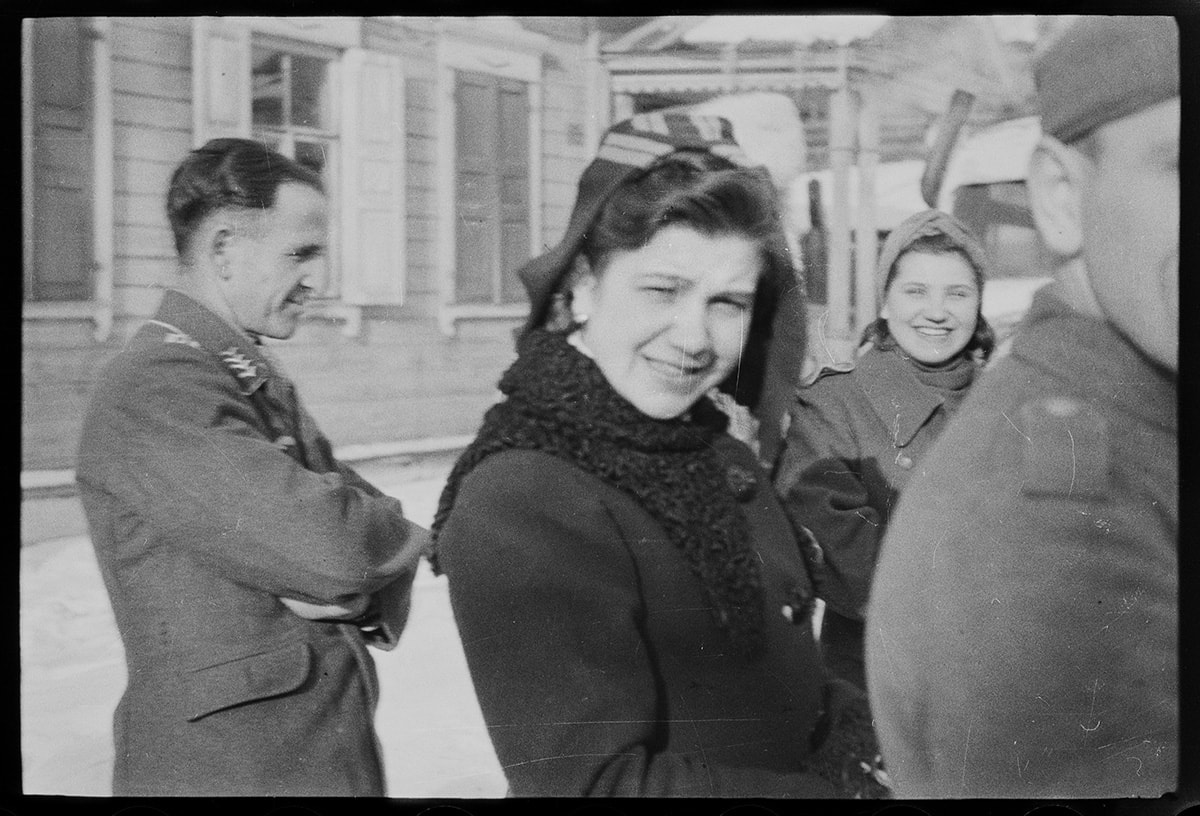
Portrait of German soldiers with local girls. The girl in the foreground wears a black coat with a scribbled collar, and in the background, a German coat. Vitebsk Region, Belarus, USSR. Winter 1941-42
Portrait of German soldiers with local girls. The girl in the foreground wears a black coat with a scribbled collar, and in the background, a German coat. Vitebsk Region, Belarus, USSR. Winter 1941-42
More about the photo
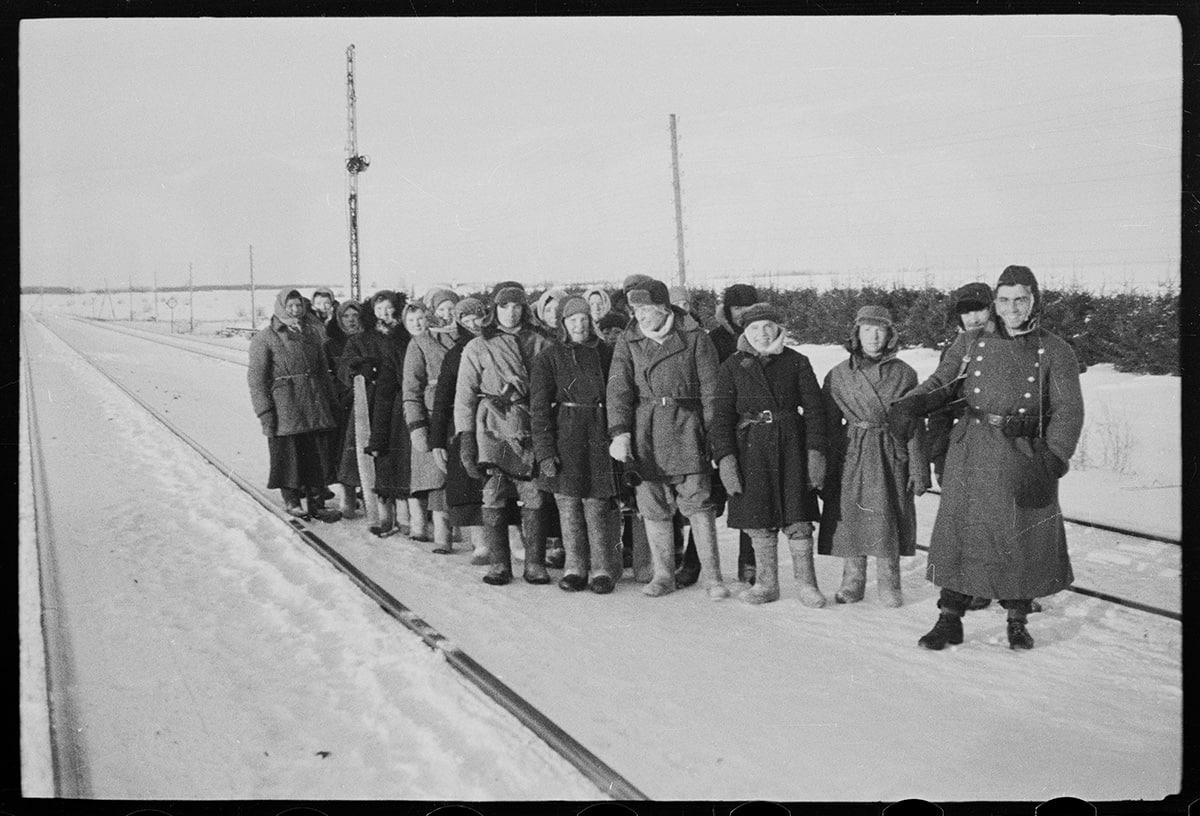
Group portrait of young boys and girls with a German escort. Judging by the saws in the girls’ hands, they were engaged in forestry work. Most of the men joined the Soviet Army or partisans. Vitebsk Region, Belarus, USSR. Winter 1941-42
Group portrait of young boys and girls with a German escort. Judging by the saws in the girls’ hands, they were engaged in forestry work. Most of the men joined the Soviet Army or partisans. Vitebsk Region, Belarus, USSR. Winter 1941-42
More about the photo
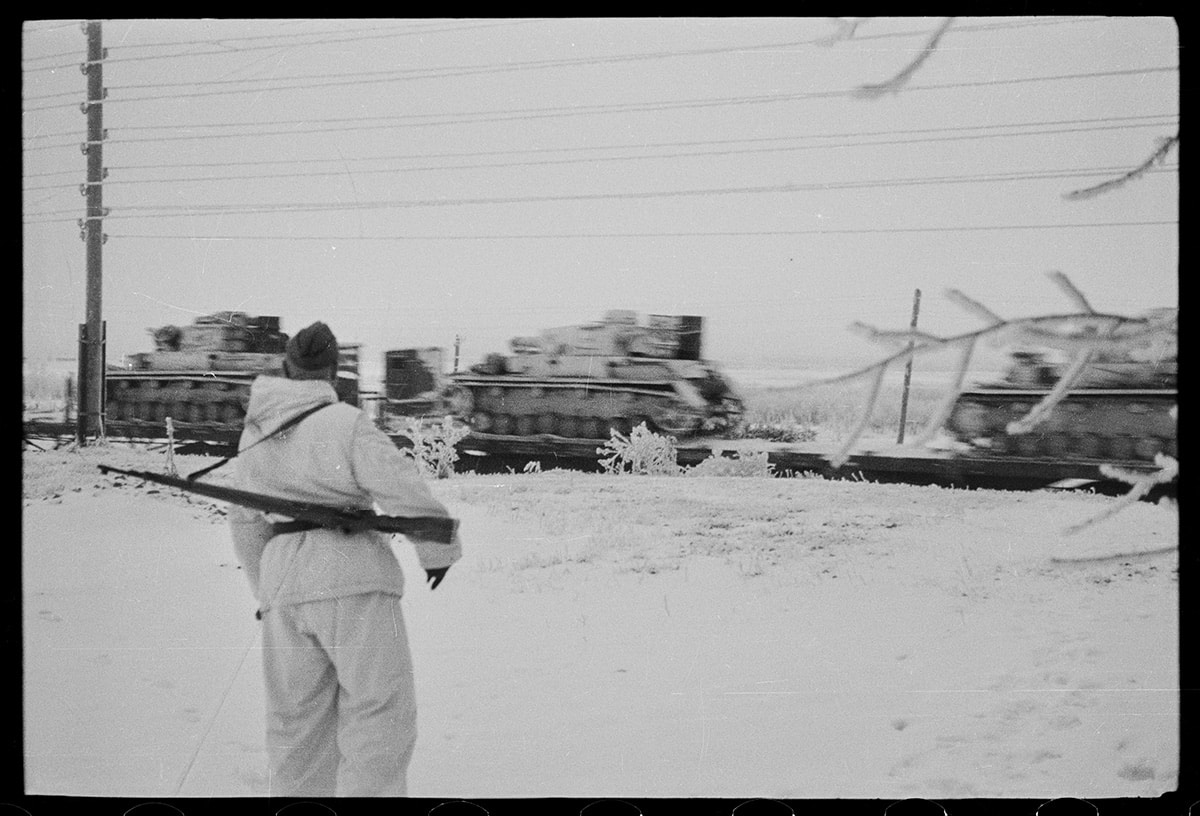
A German soldier watches as German PzKpfw IV medium tanks (also known as “T-IVs” in the USSR) in winter camouflage are transported along railway platforms to the Eastern Front. A Mauser 98k magazine-loaded rifle rests on the German soldier’s shoulder. Vitebsk Region, Belarus, USSR. Winter 1941-42
A German soldier watches as German PzKpfw IV medium tanks (also known as “T-IVs” in the USSR) in winter camouflage are transported along railway platforms to the Eastern Front. A Mauser 98k magazine-loaded rifle rests on the German soldier’s shoulder. Vitebsk Region, Belarus, USSR. Winter 1941-42
More about the photo
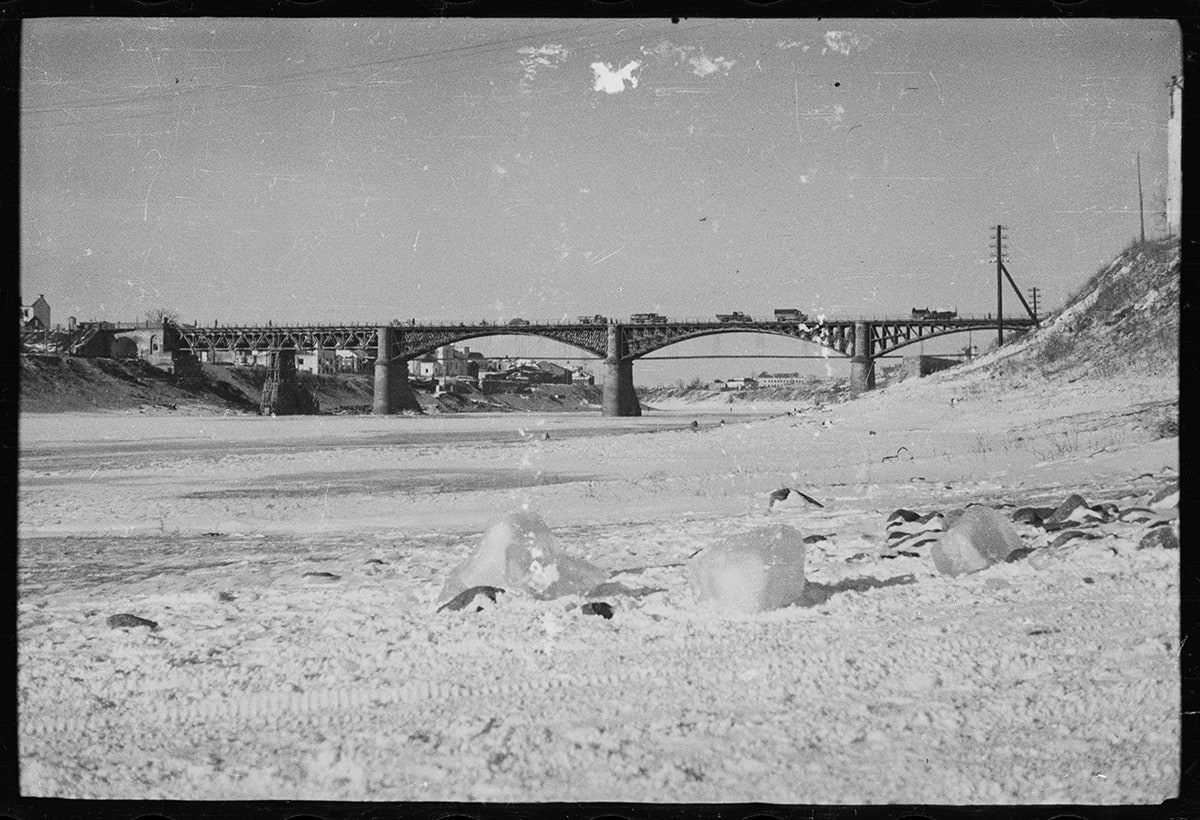
German military equipment moves across the German-repaired Dvinsky Bridge (later Blokhin Bridge) over the western Dvina River. Vitebsk, Belarus, USSR. Winter 1941-42
German military equipment moves across the German-repaired Dvinsky Bridge (later Blokhin Bridge) over the western Dvina River. Vitebsk, Belarus, USSR. Winter 1941-42
More about the photo
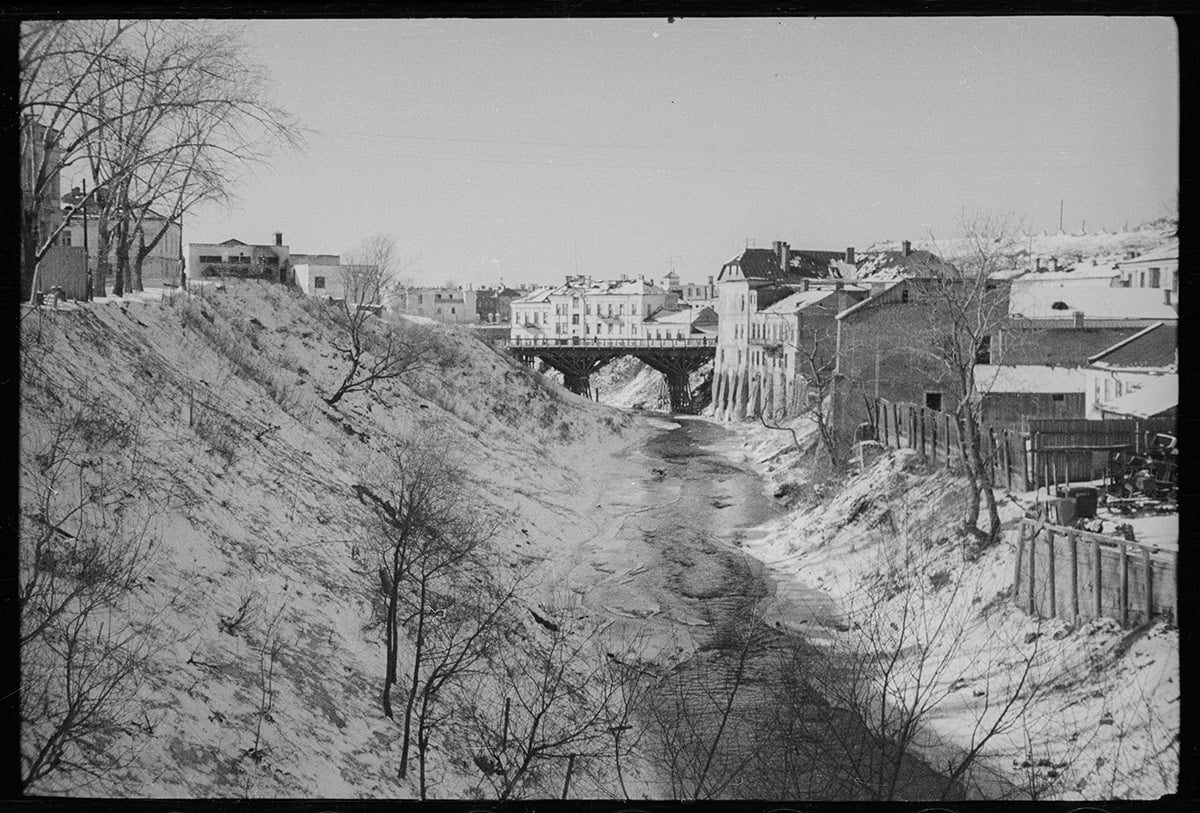
Bridge over the Vitba River, a left tributary of the Zapadnaya Dvina River. Vitebsk, Belarus, USSR. Winter 1941-42
Bridge over the Vitba River, a left tributary of the Zapadnaya Dvina River. Vitebsk, Belarus, USSR. Winter 1941-42
More about the photo
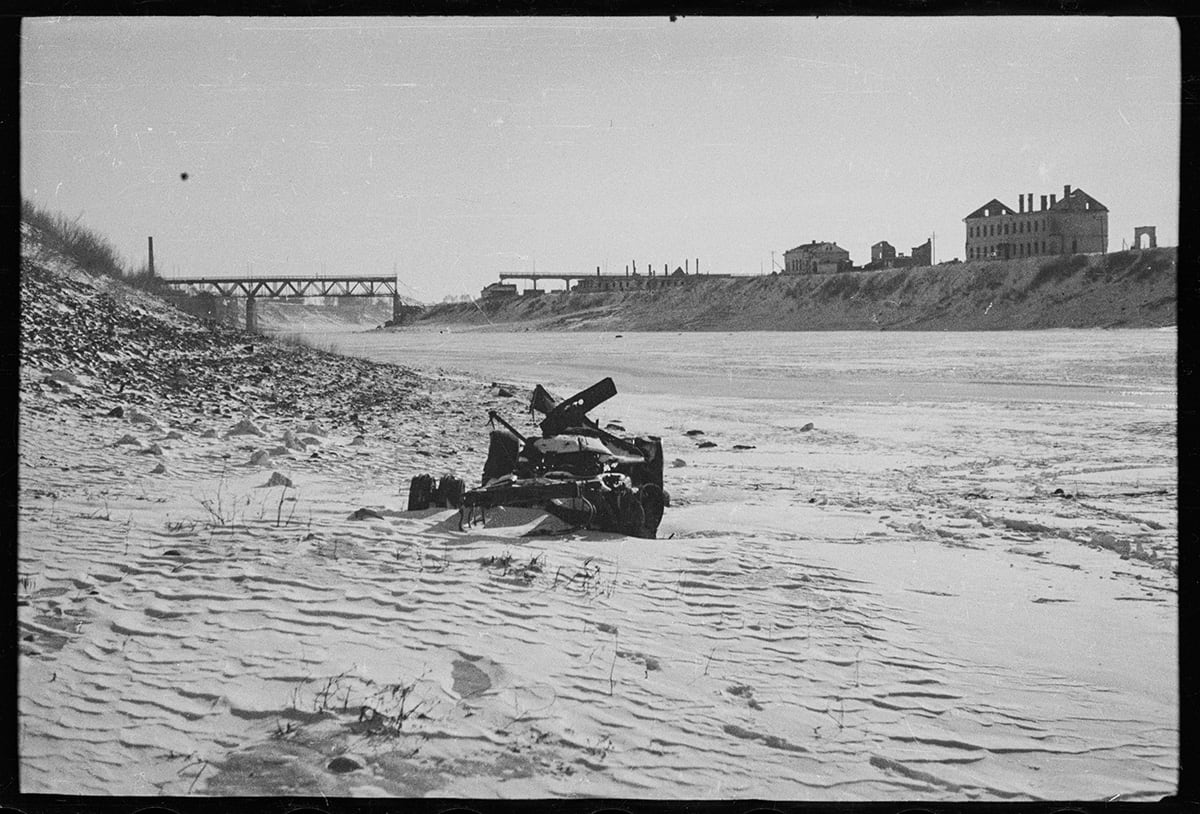
Remains of a Soviet truck on the banks of the Zapadnaya Dvina River. The destroyed Novy Bridge (later Blokhin Bridge) can be seen in the background. Vitebsk, Belarus, USSR. Winter 1941–42
Remains of a Soviet truck on the banks of the Zapadnaya Dvina River. The destroyed Novy Bridge (later Blokhin Bridge) can be seen in the background. Vitebsk, Belarus, USSR. Winter 1941–42
More about the photo
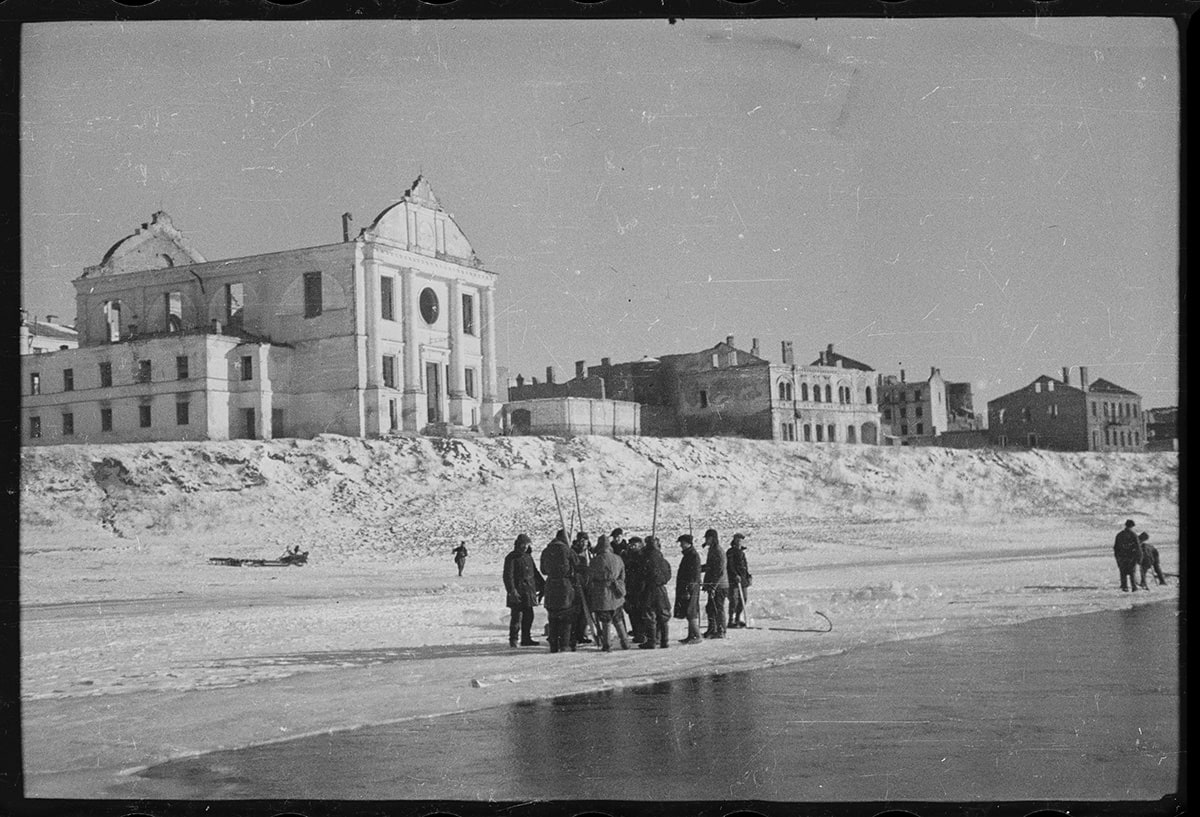
A group of men with axes, pickaxes, and other ice-breaking tools on the partially frozen Western Dvina River. Ruins of destroyed buildings can be seen on the banks. Vitebsk, Belarus, USSR. Winter 1941-42
A group of men with axes, pickaxes, and other ice-breaking tools on the partially frozen Western Dvina River. Ruins of destroyed buildings can be seen on the banks. Vitebsk, Belarus, USSR. Winter 1941-42
More about the photo
